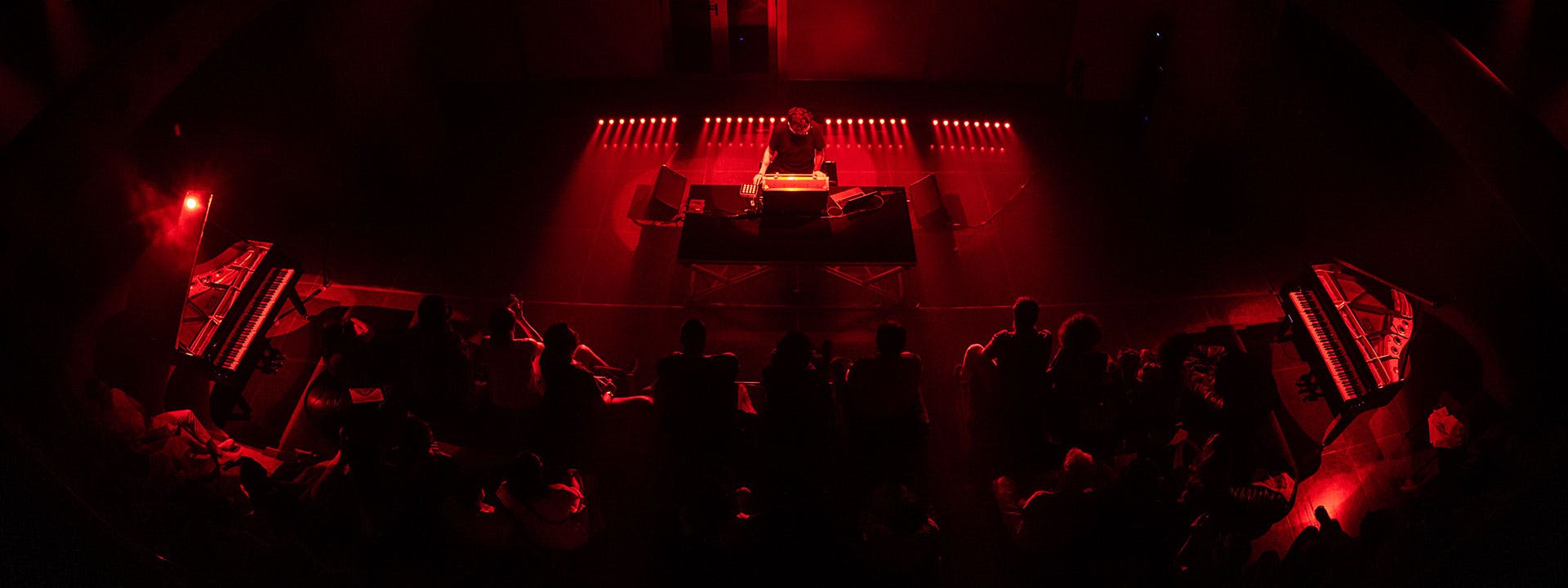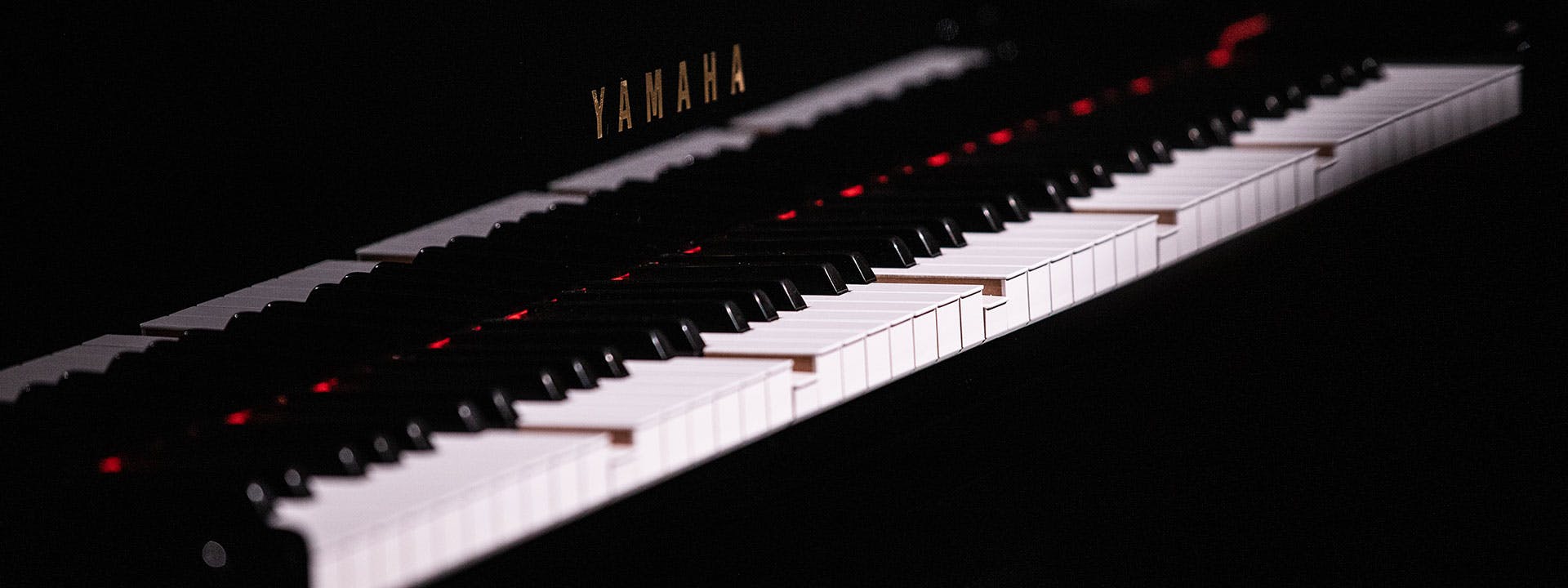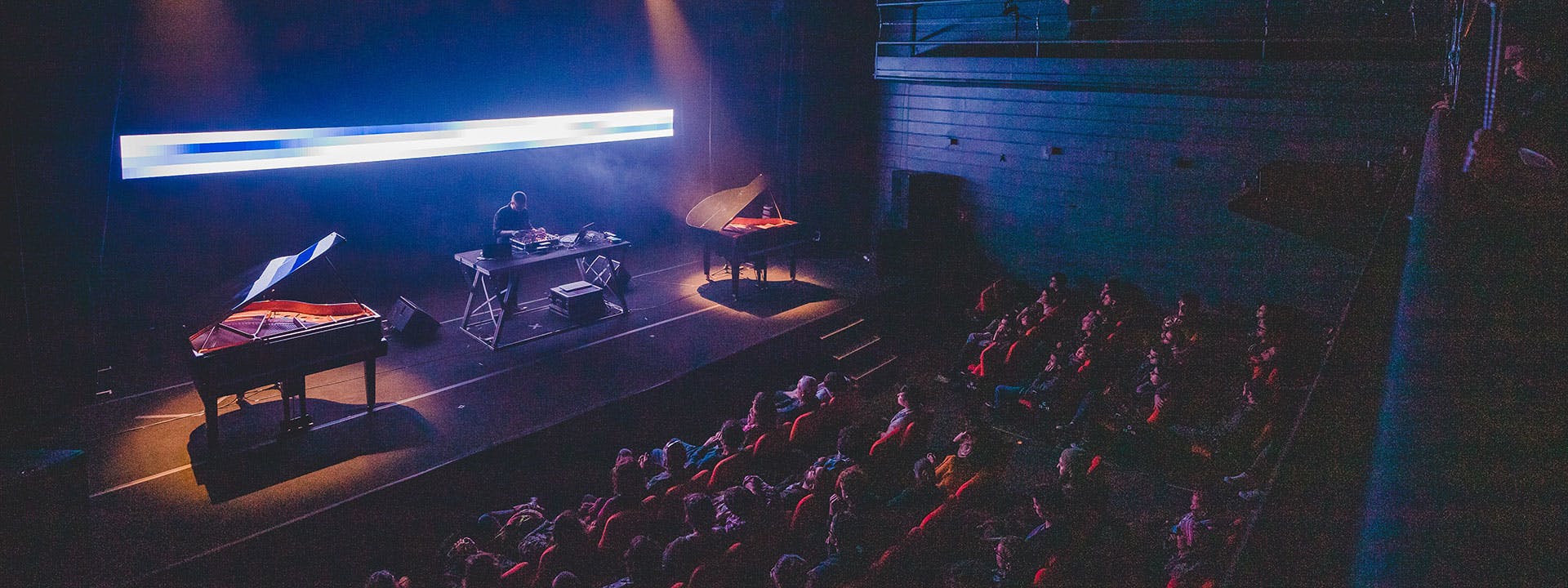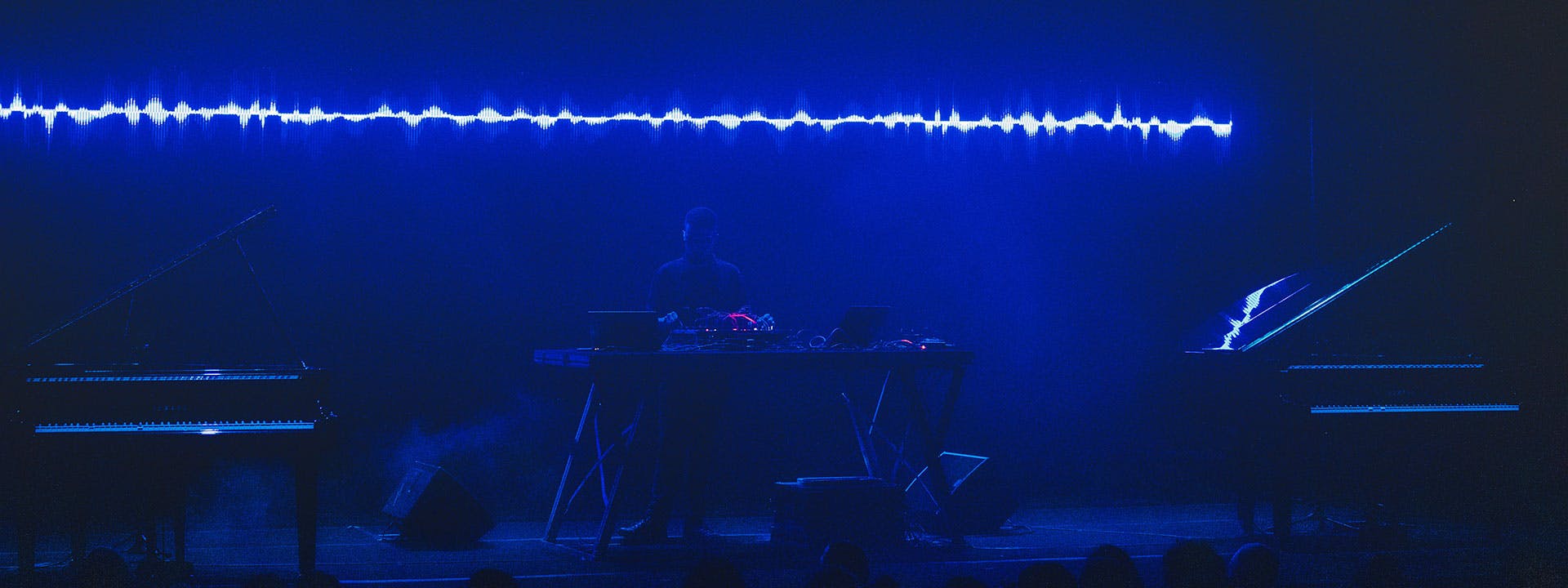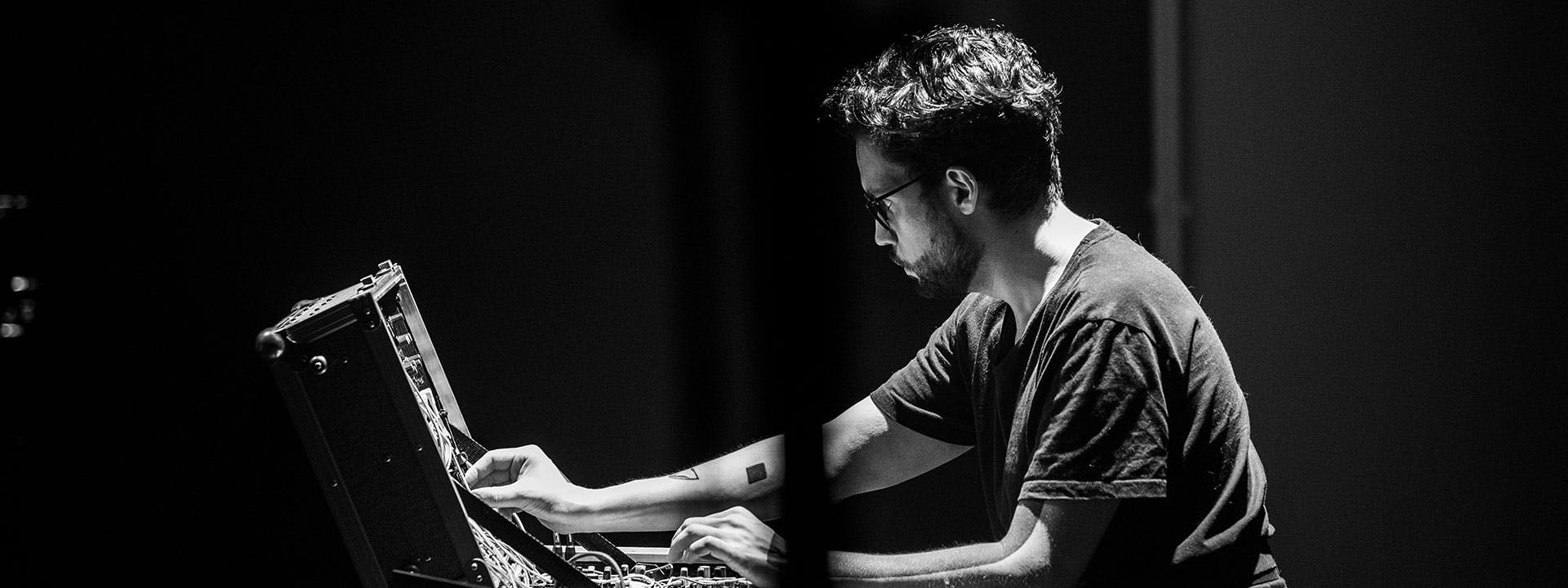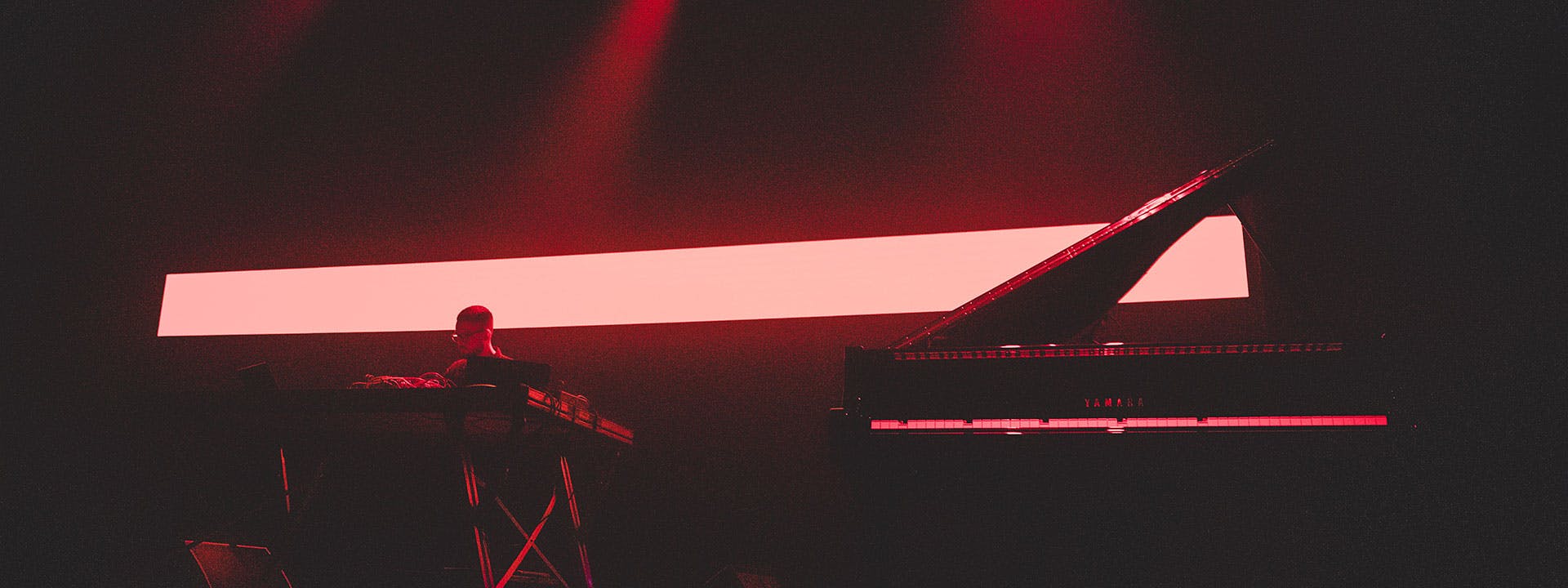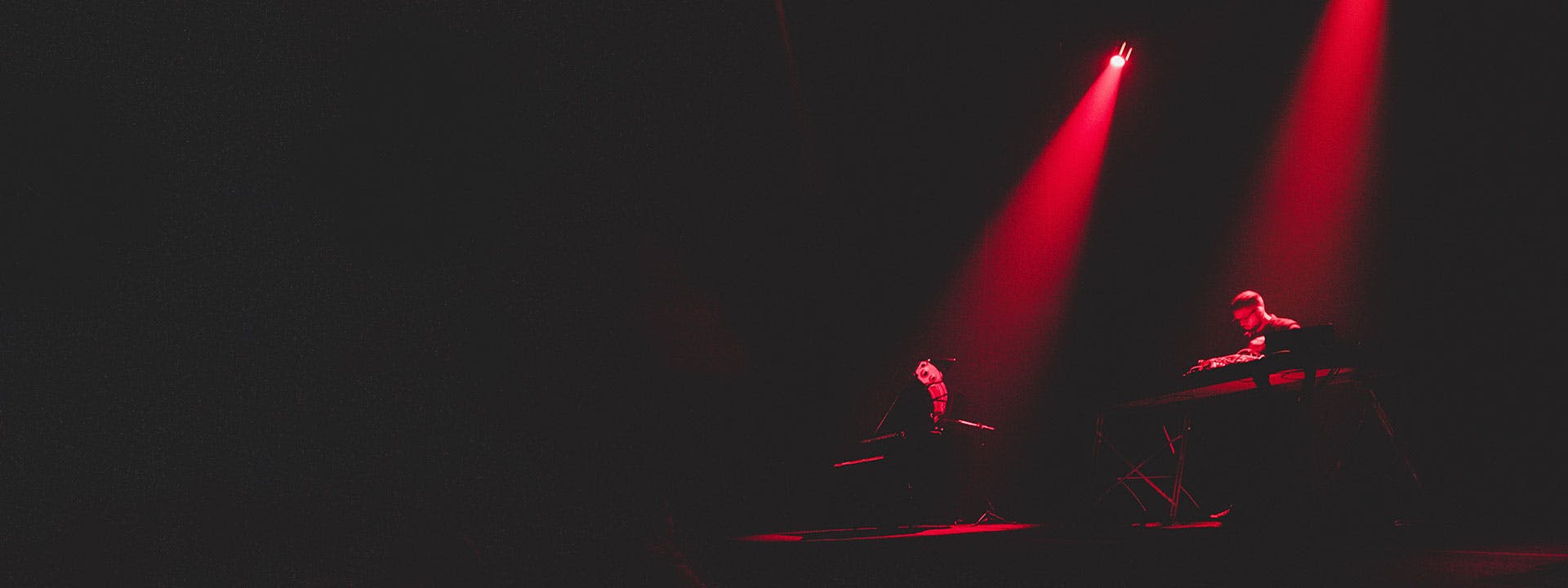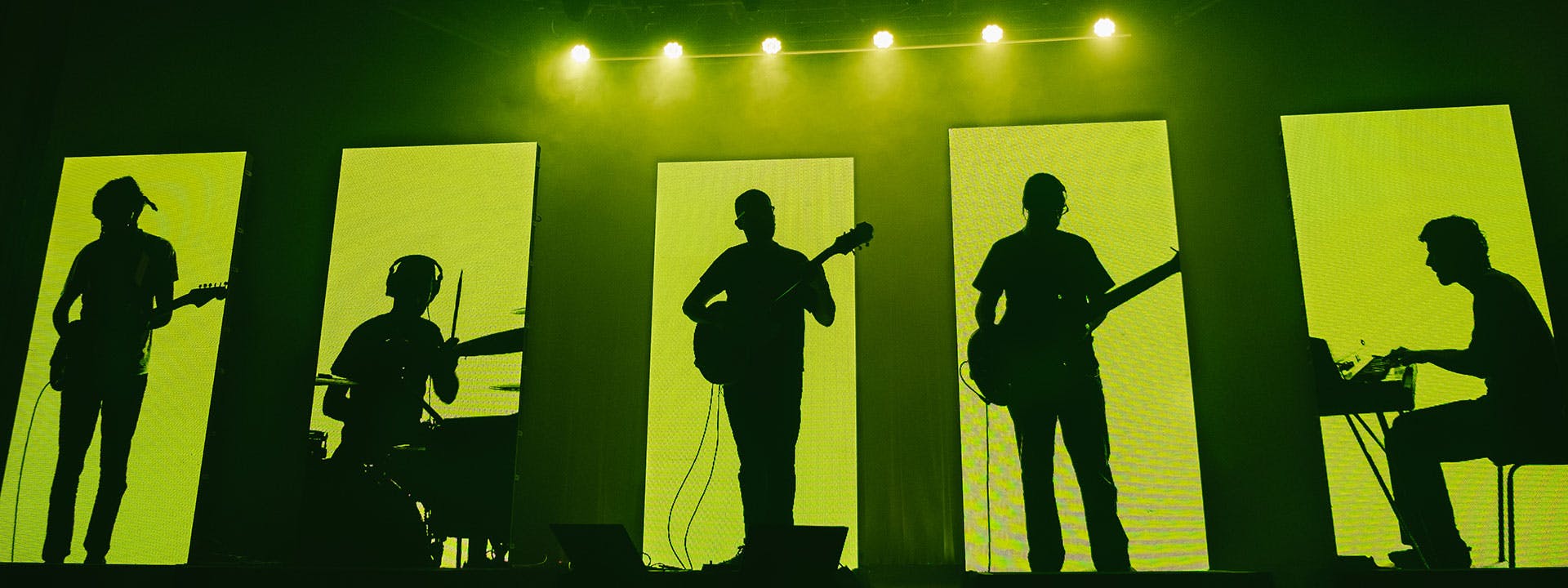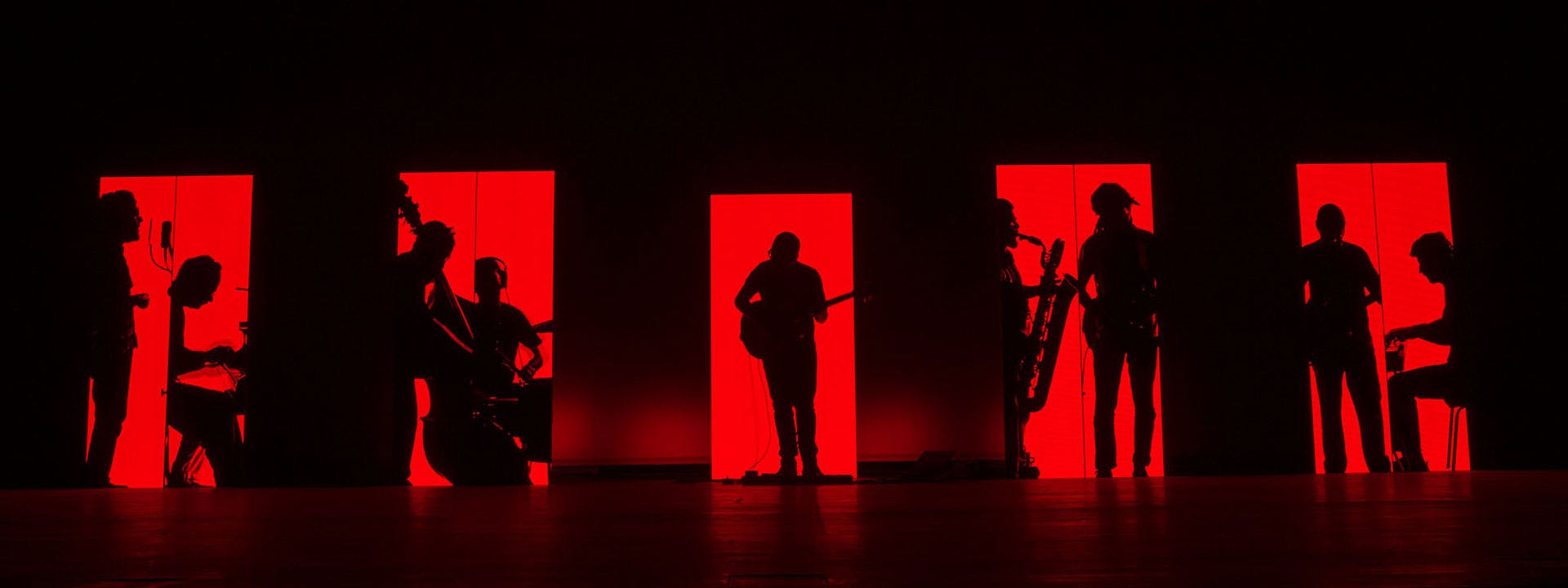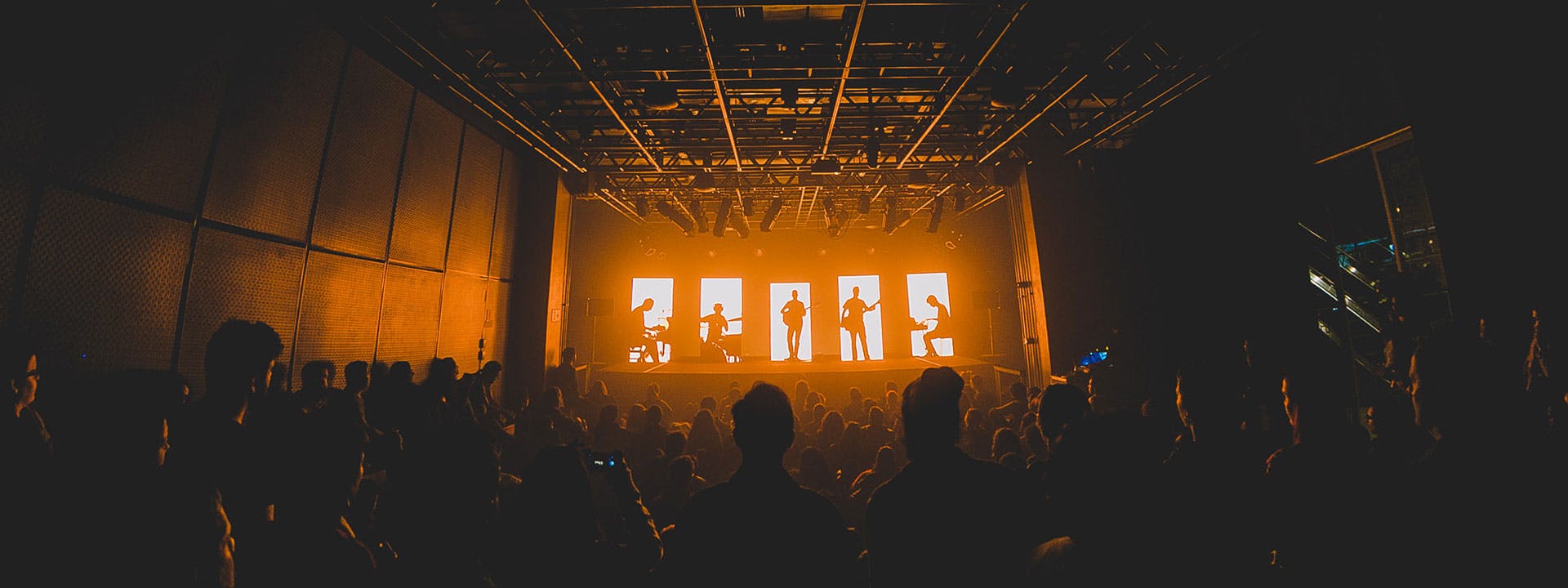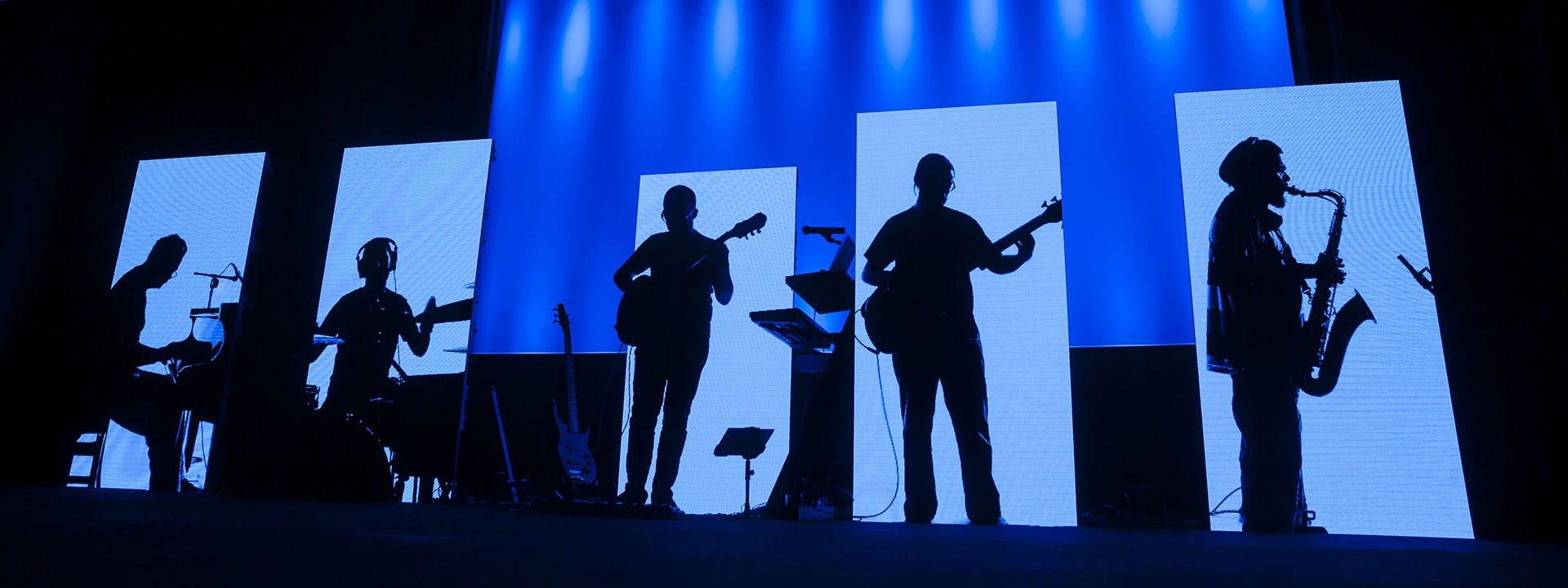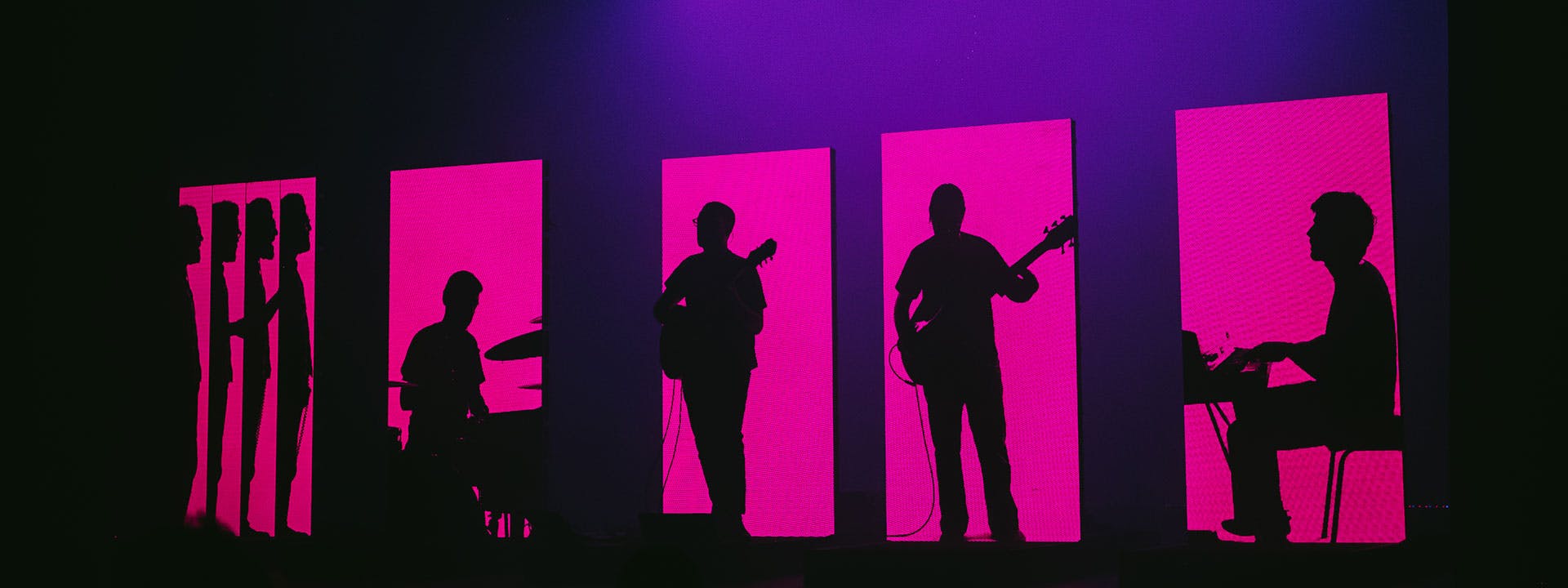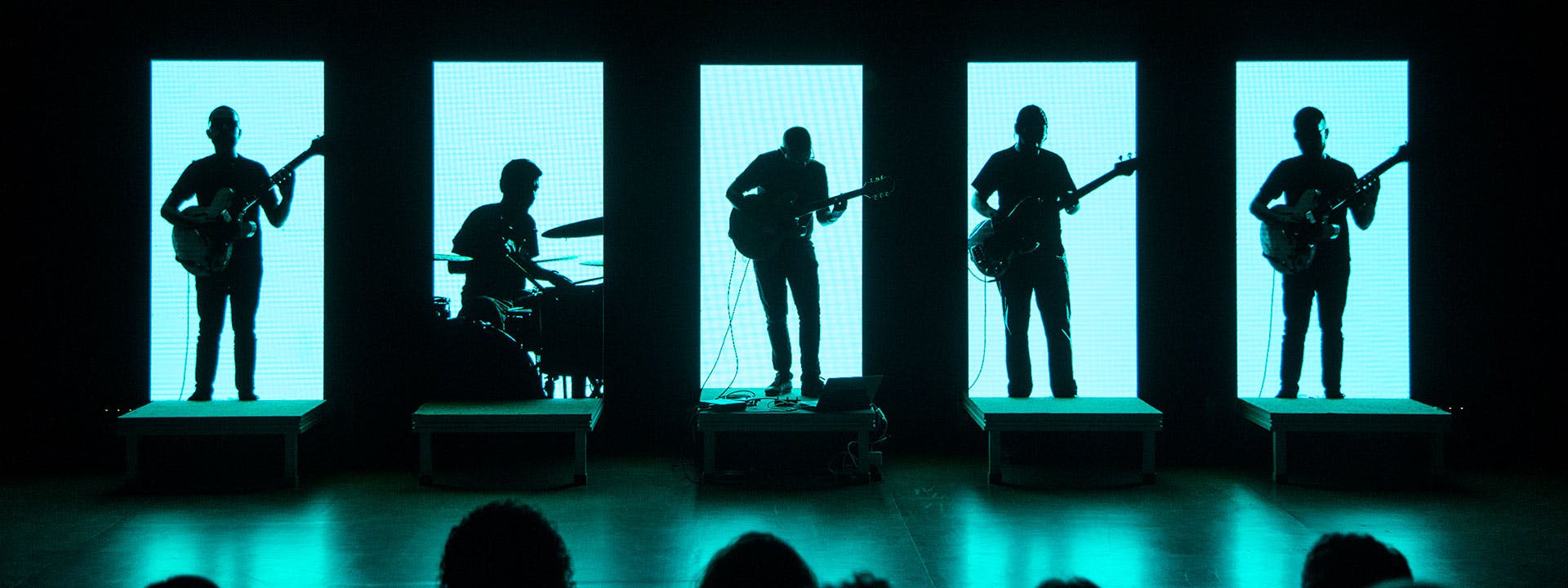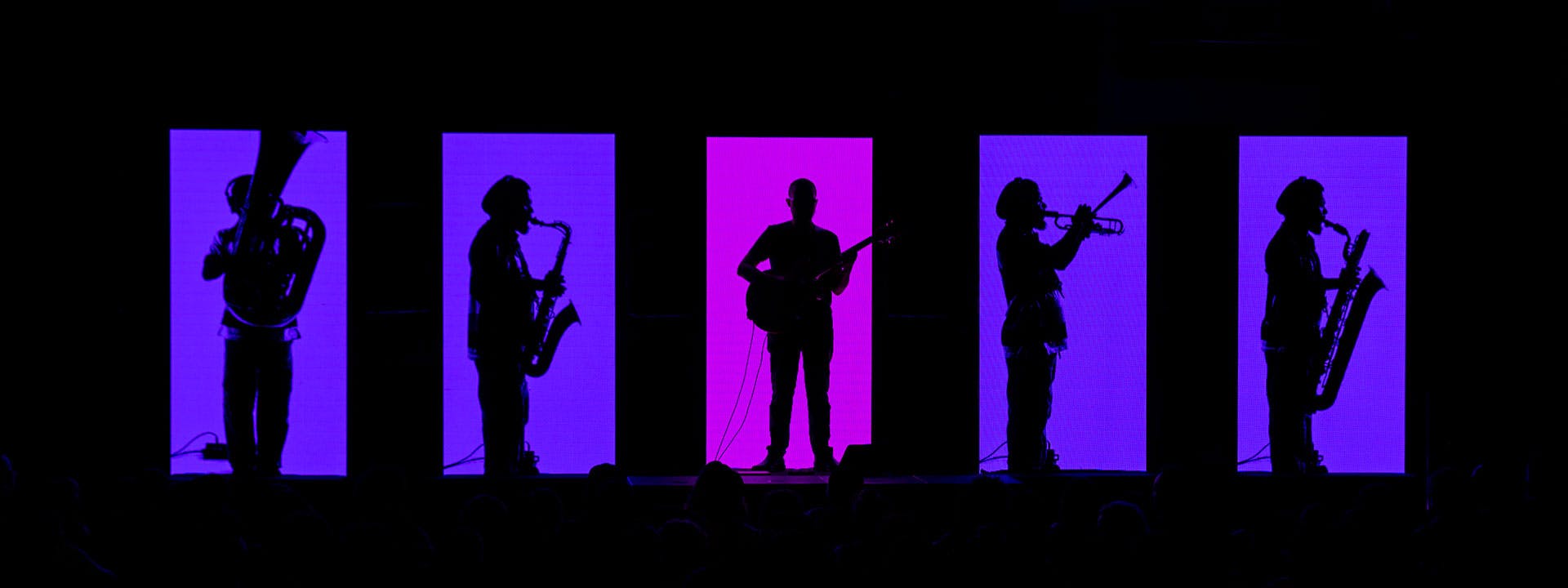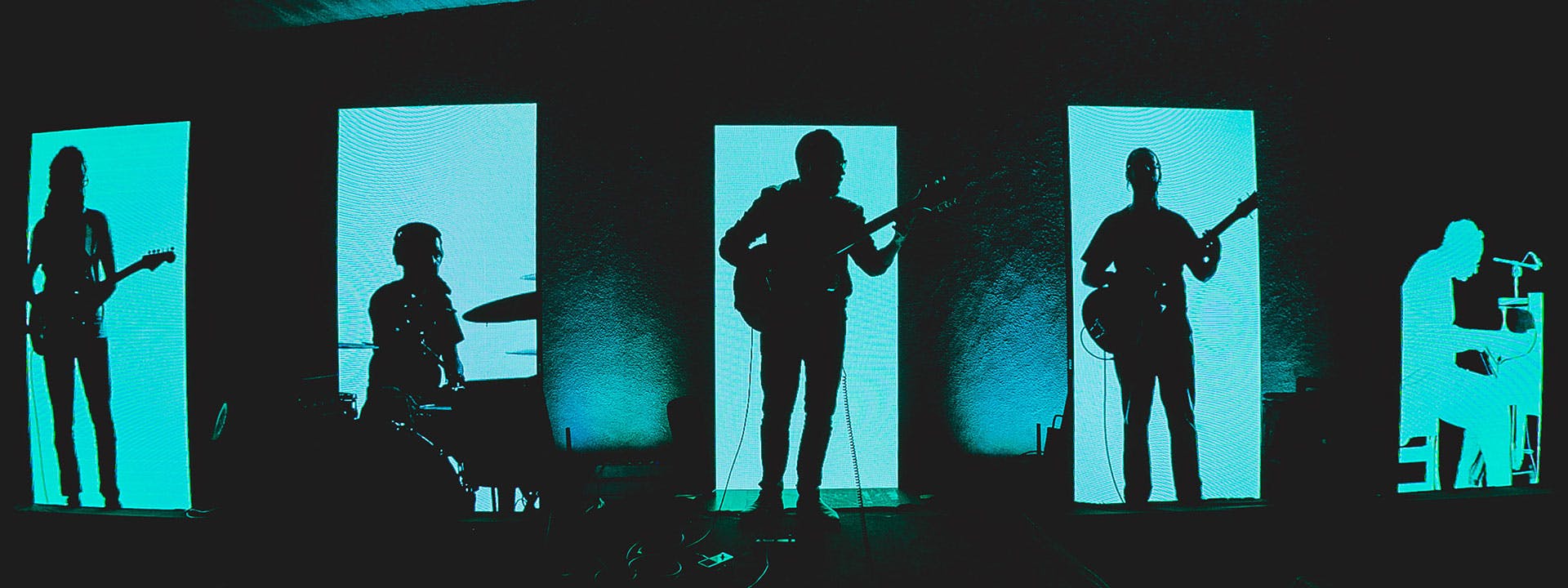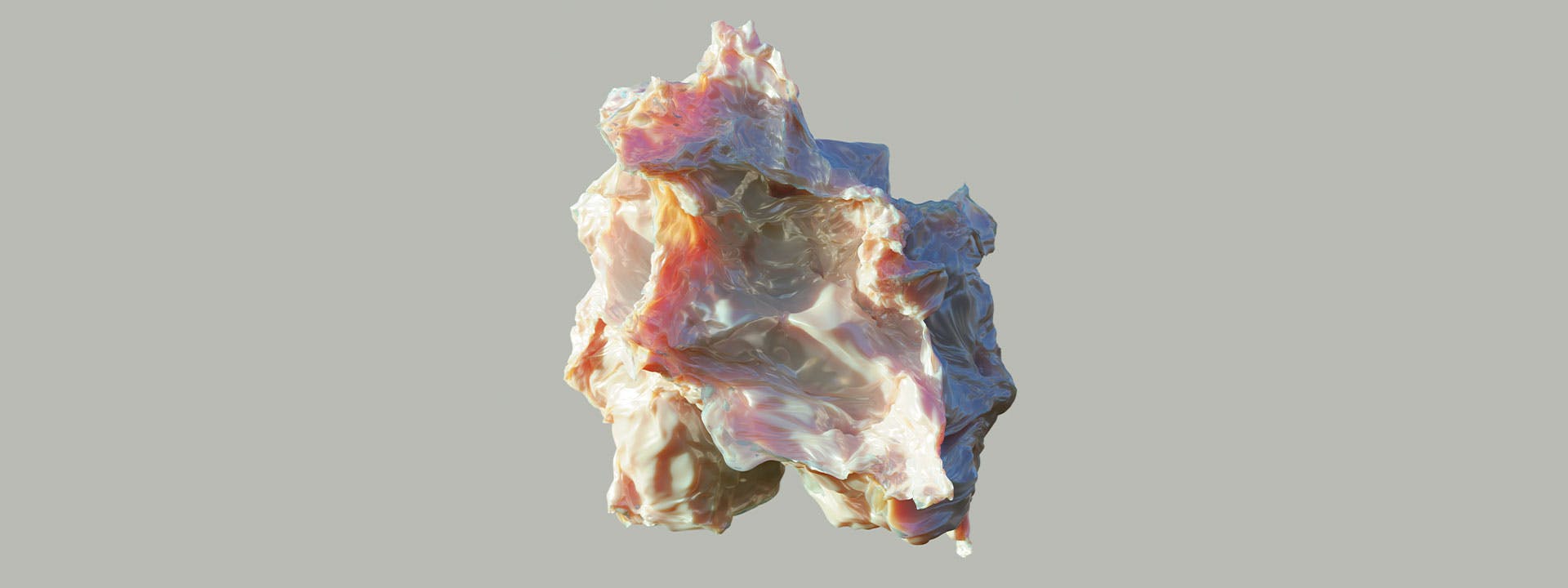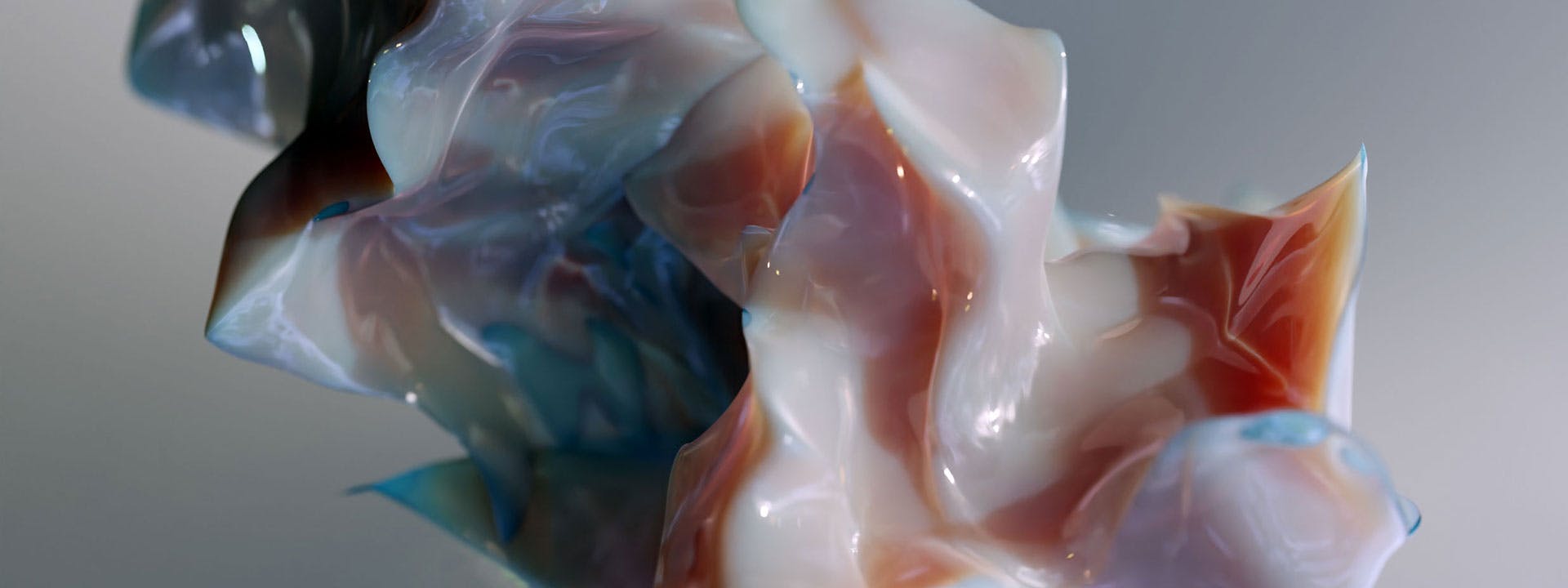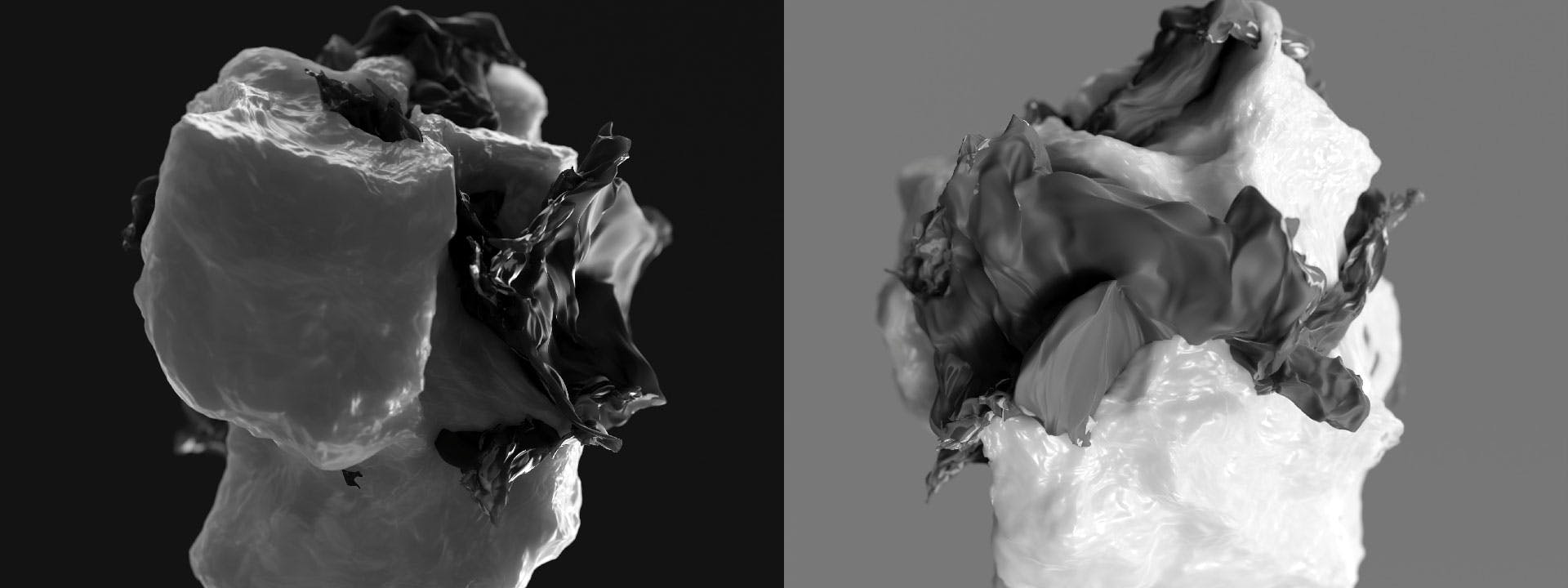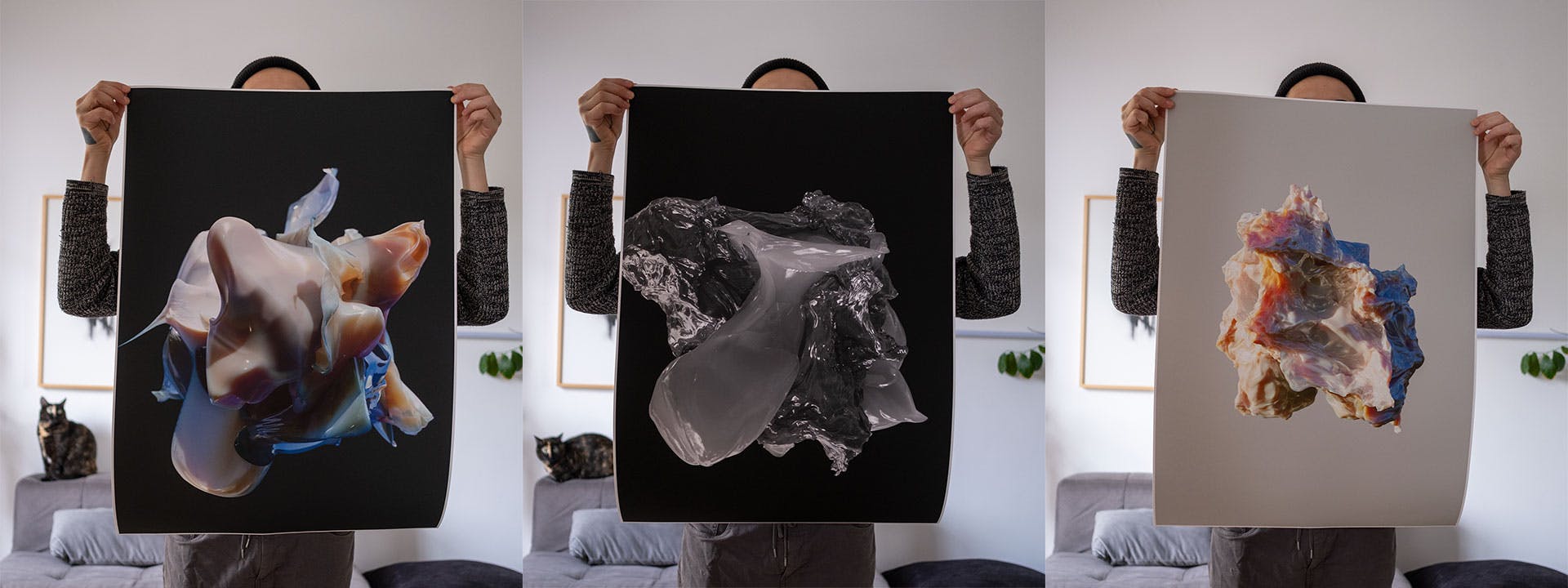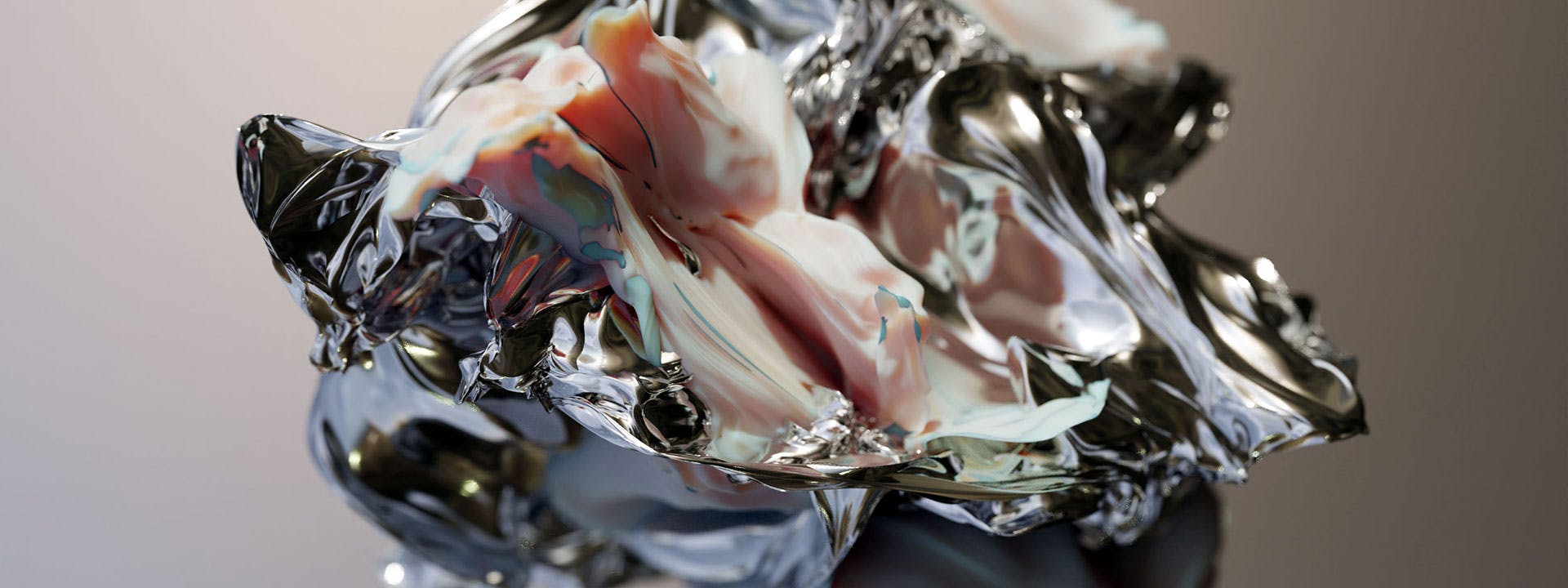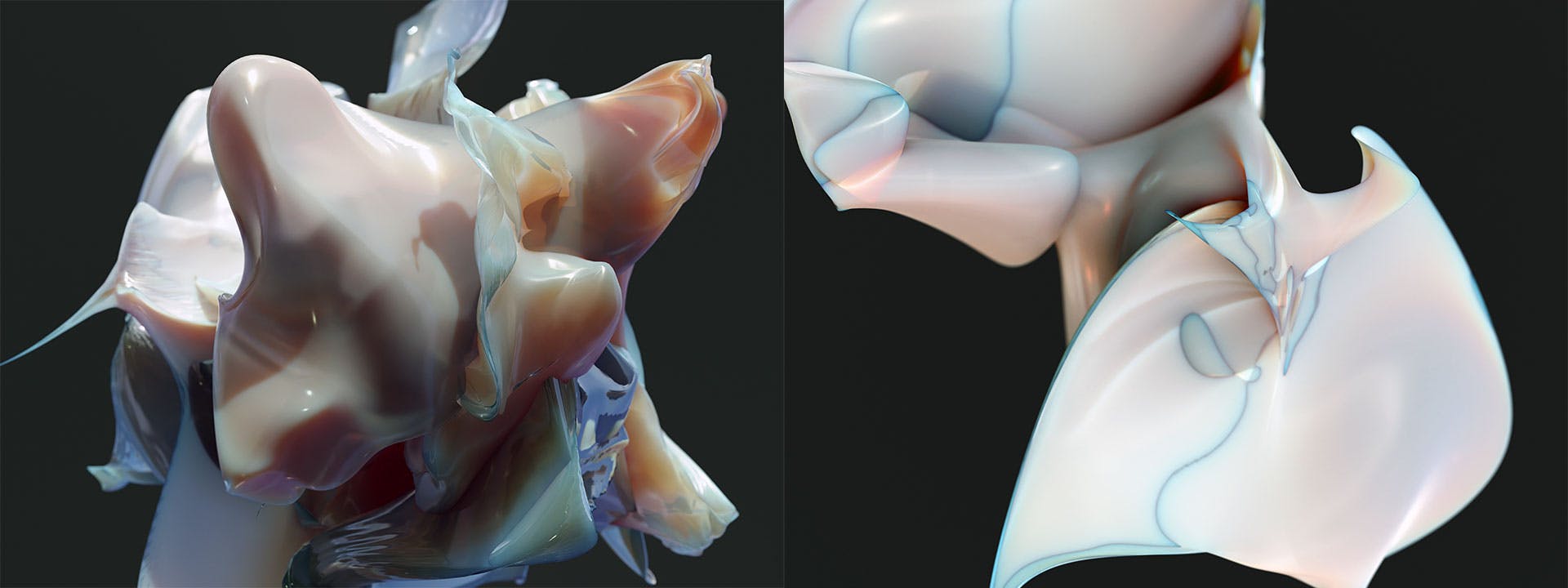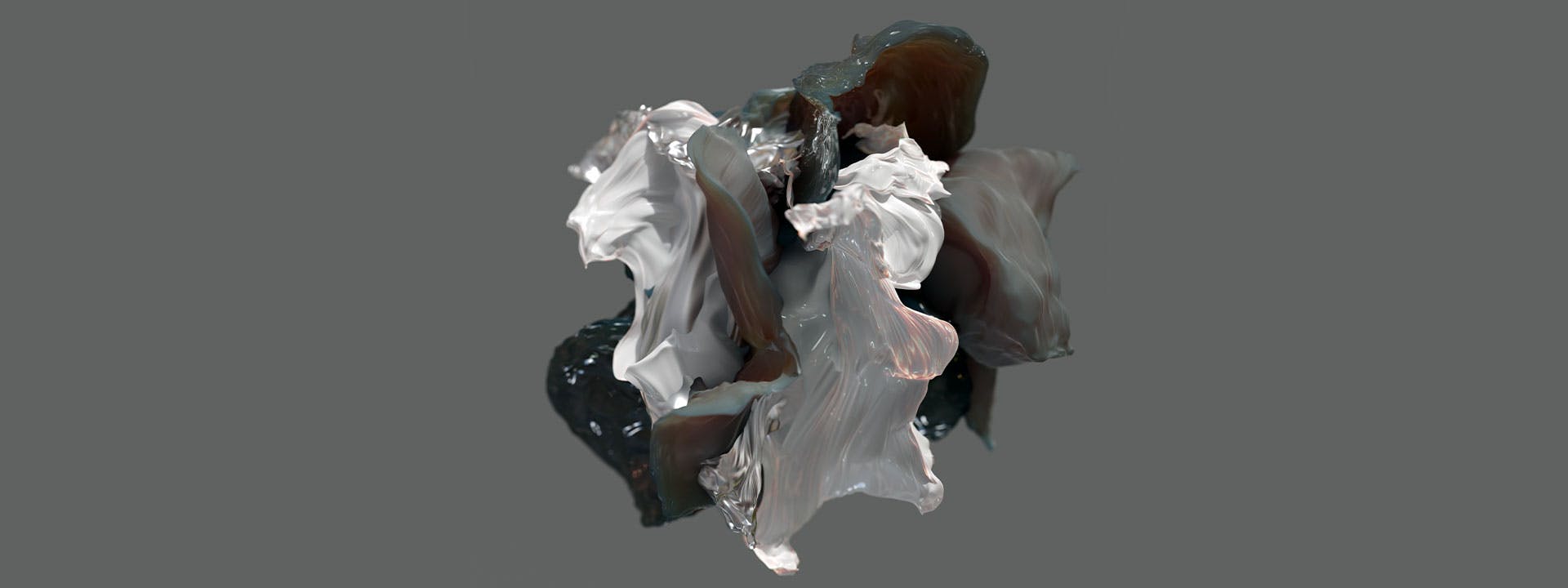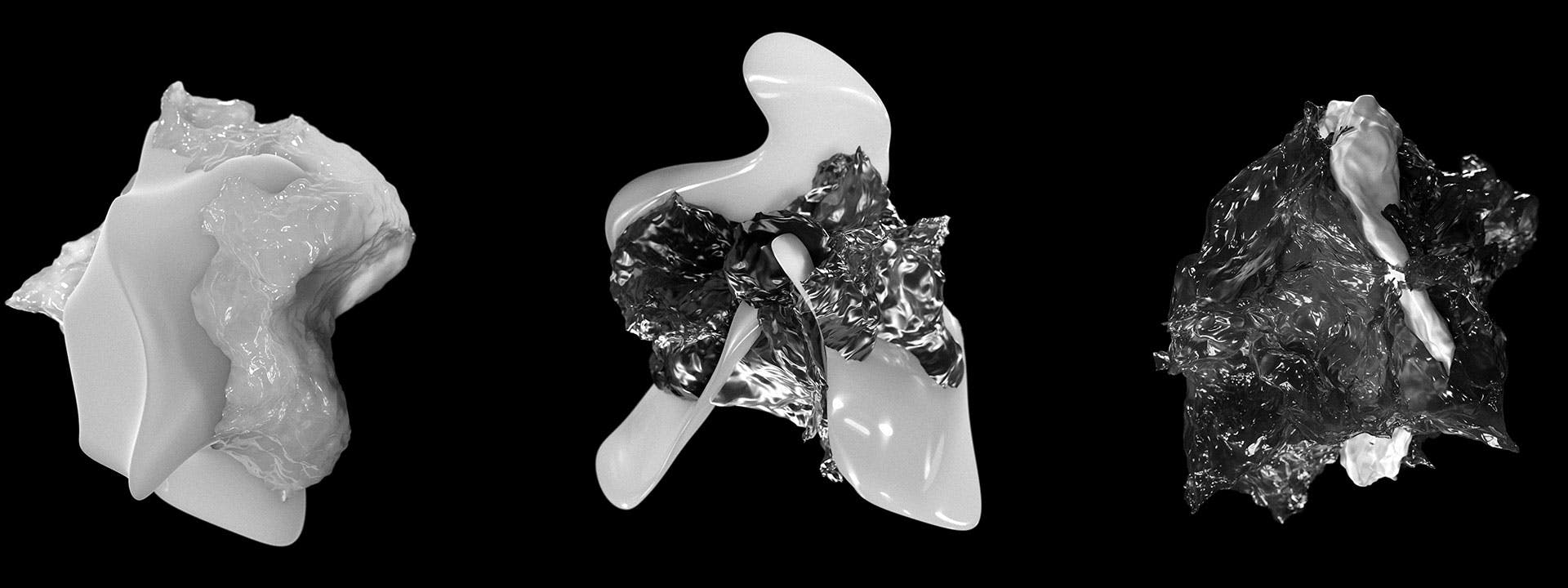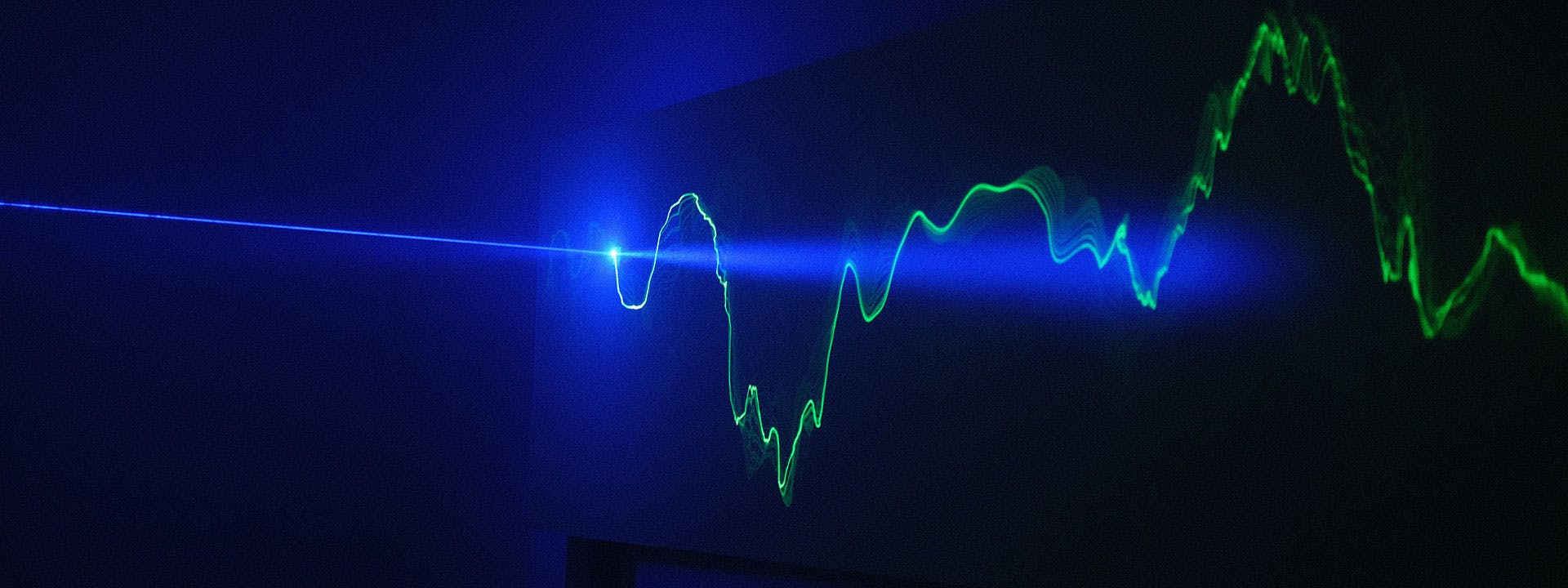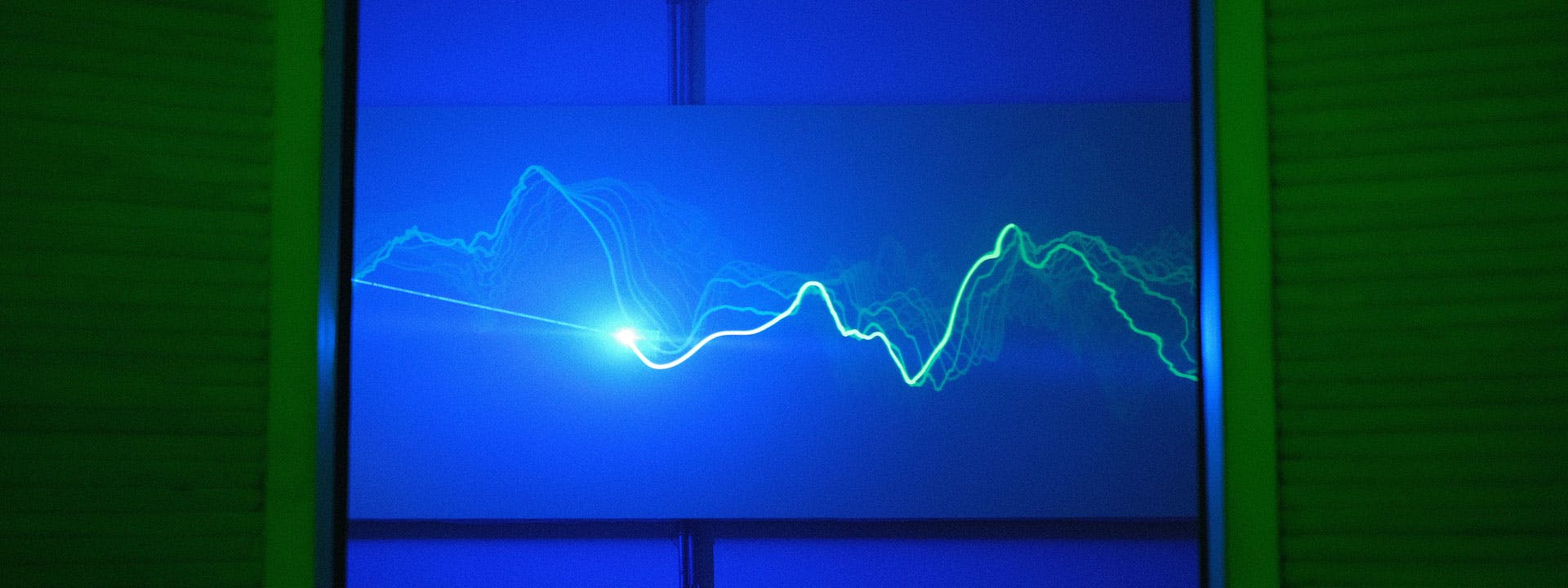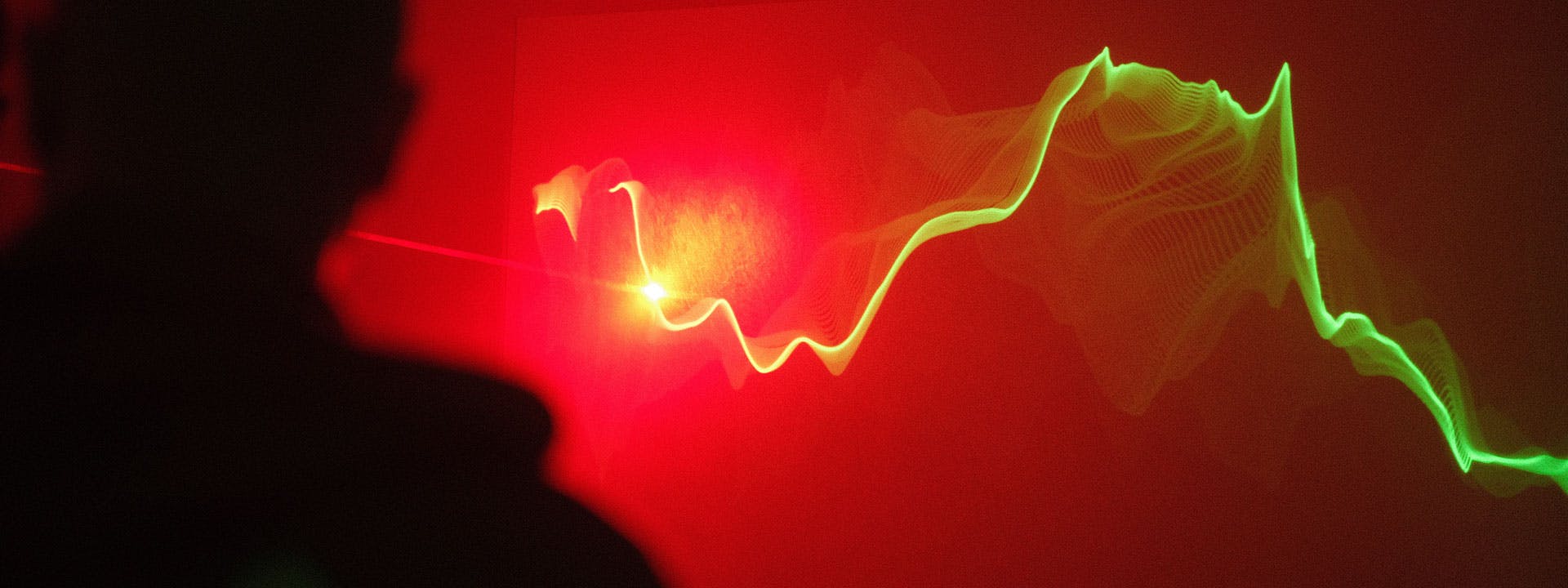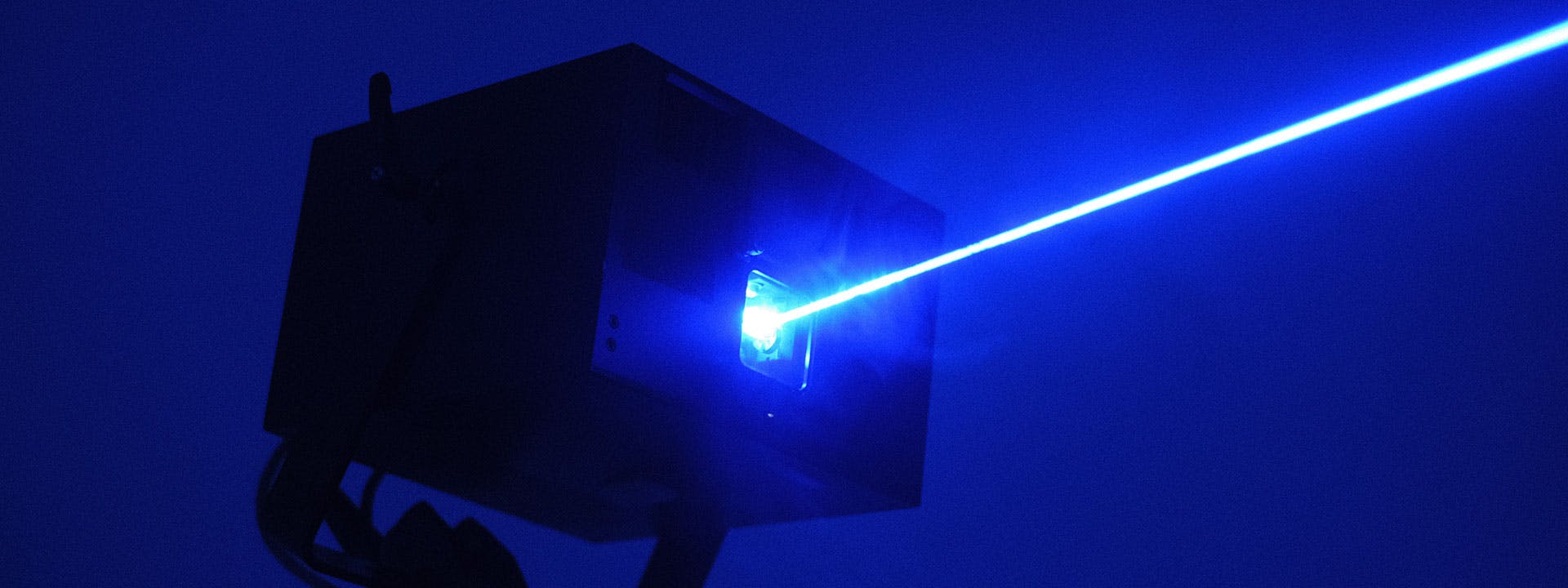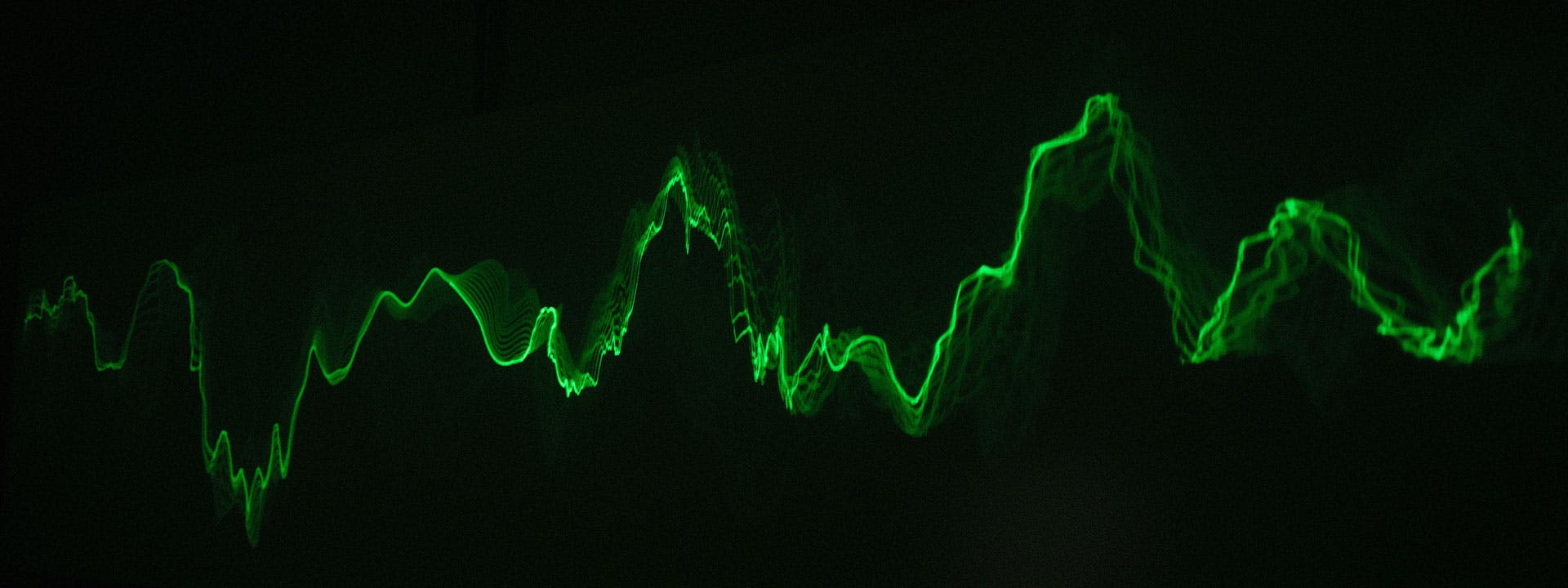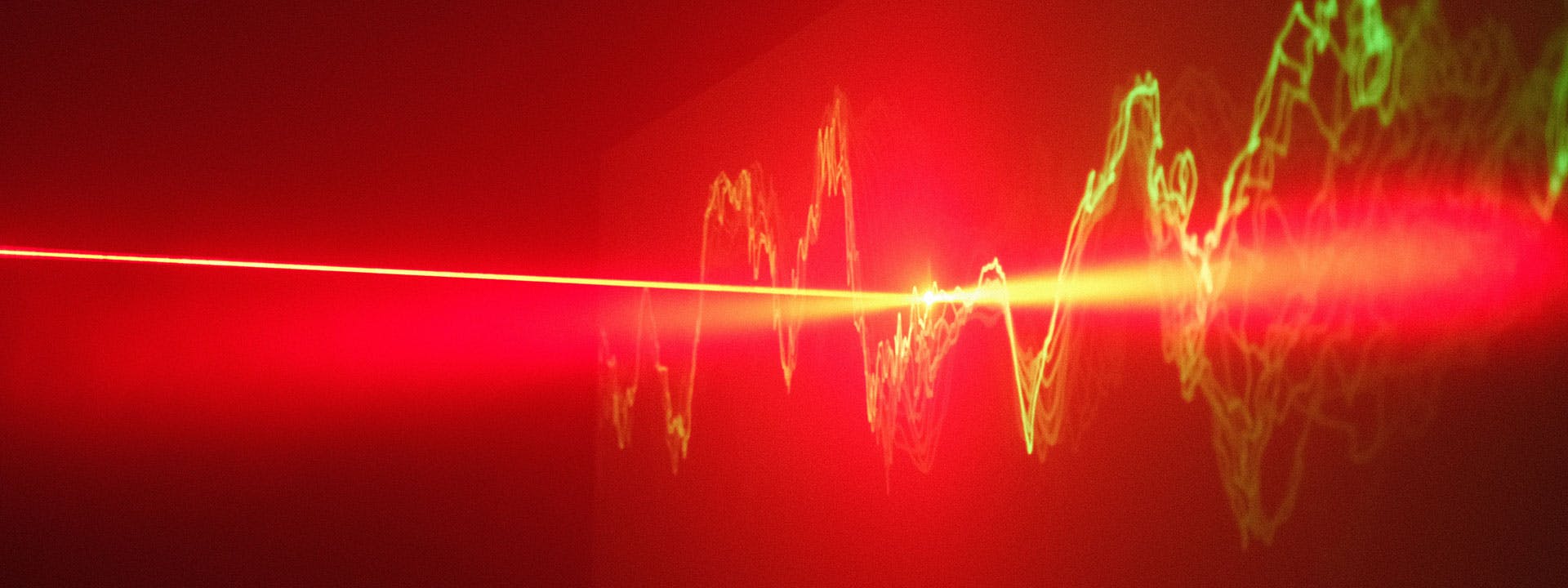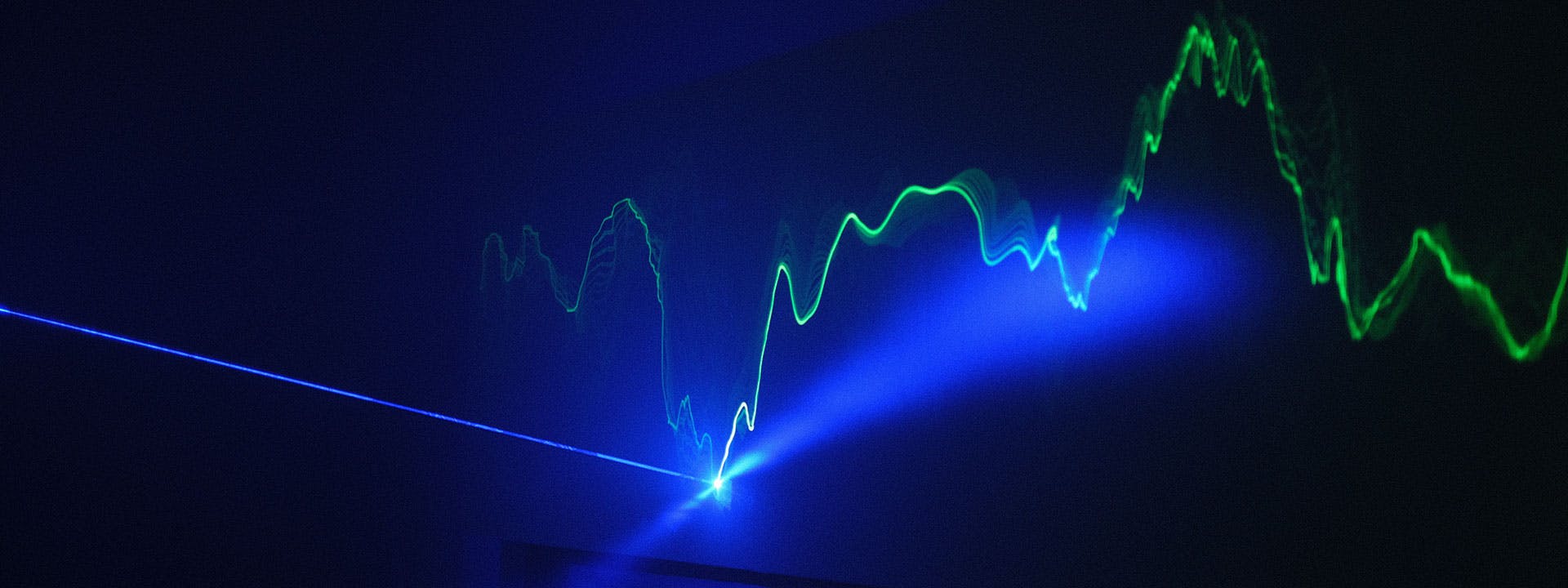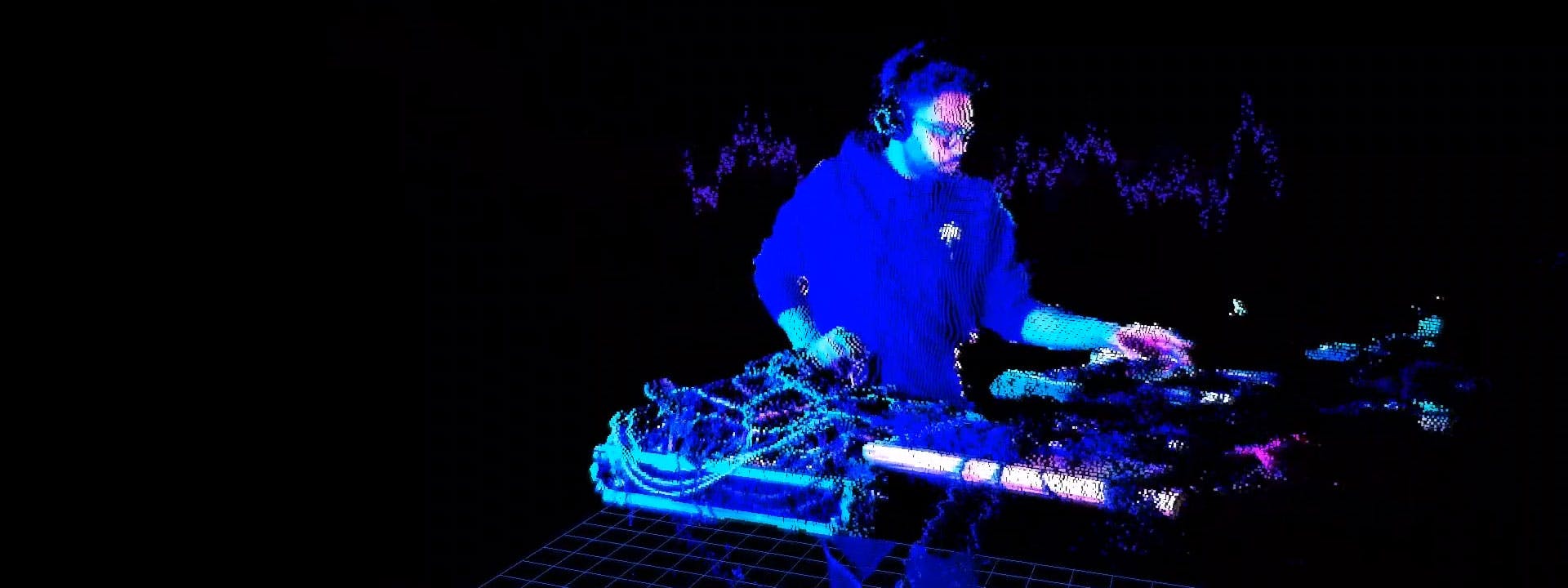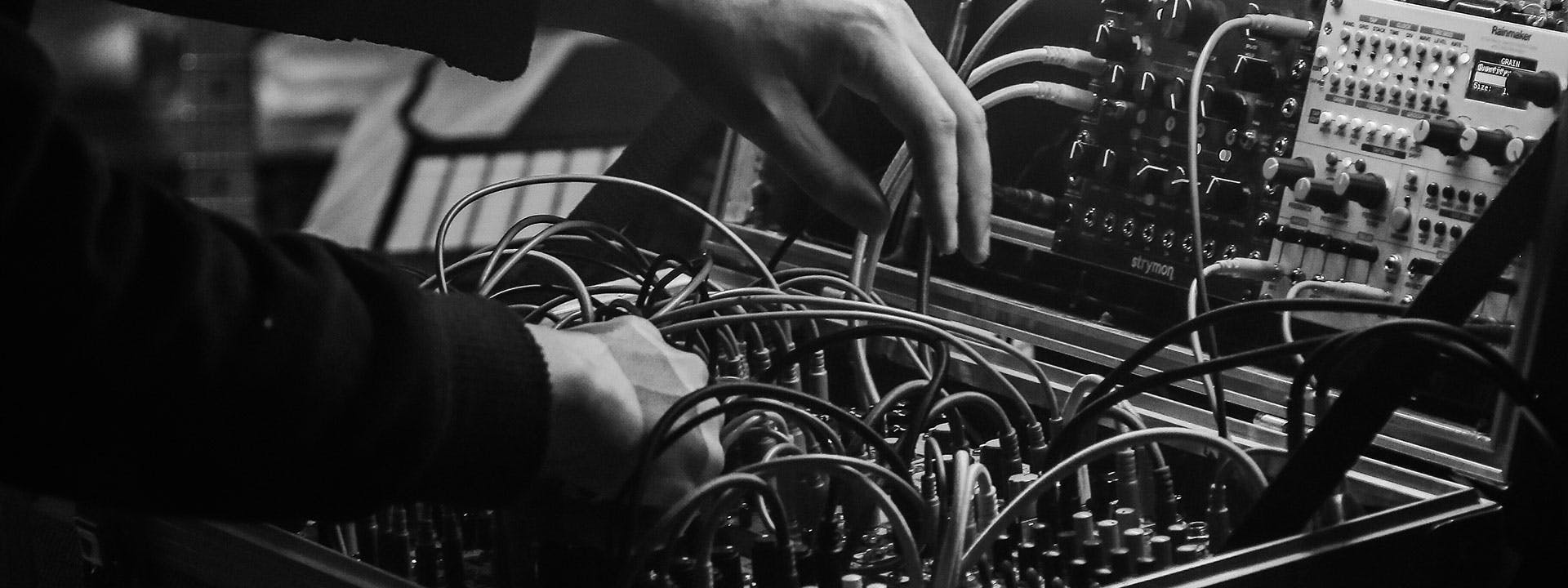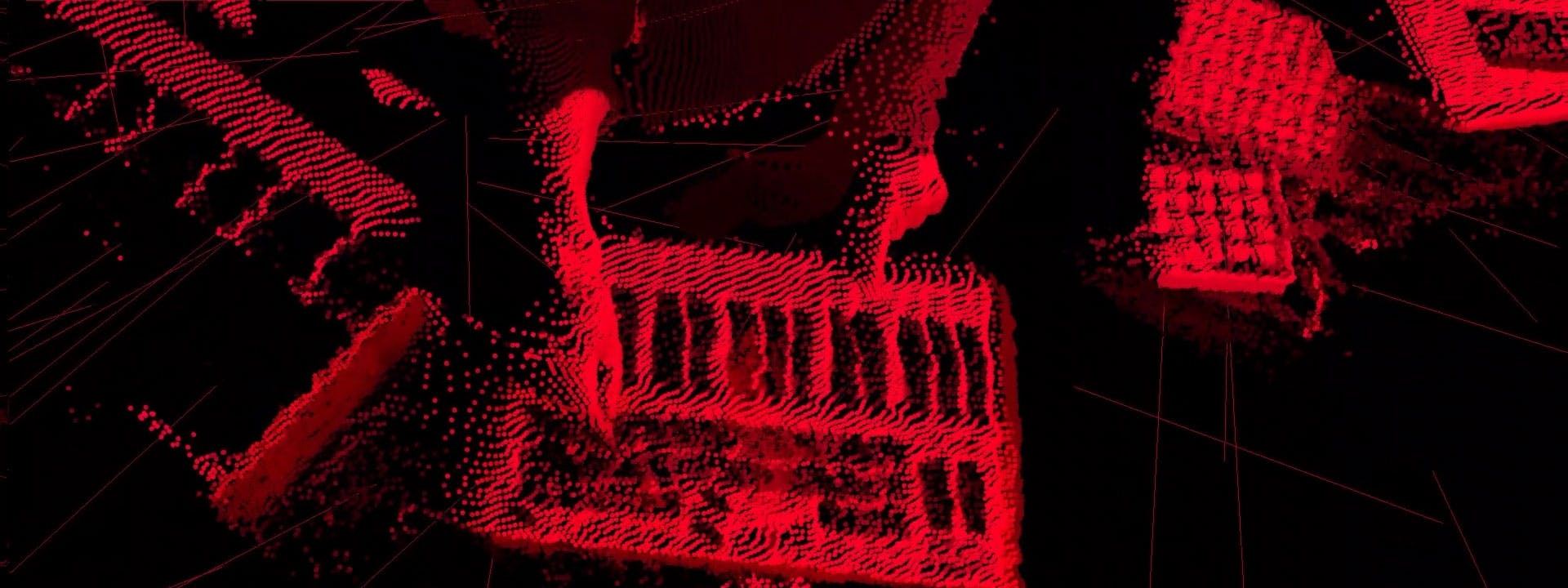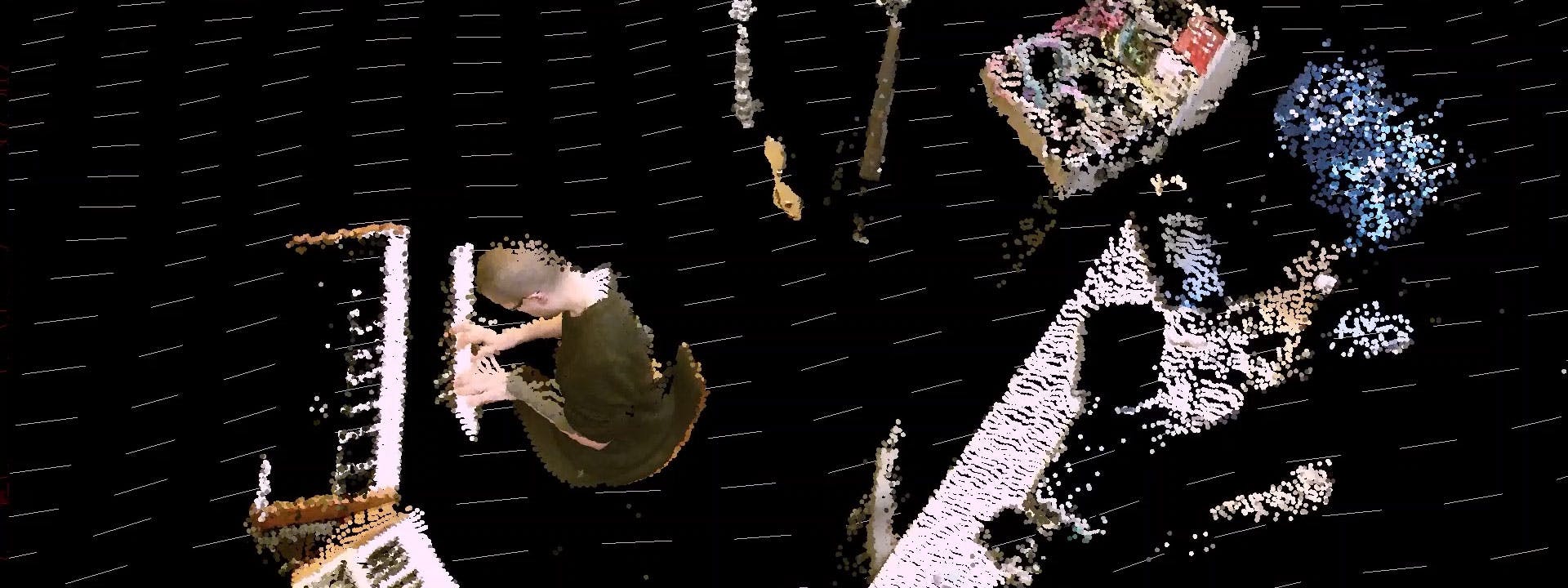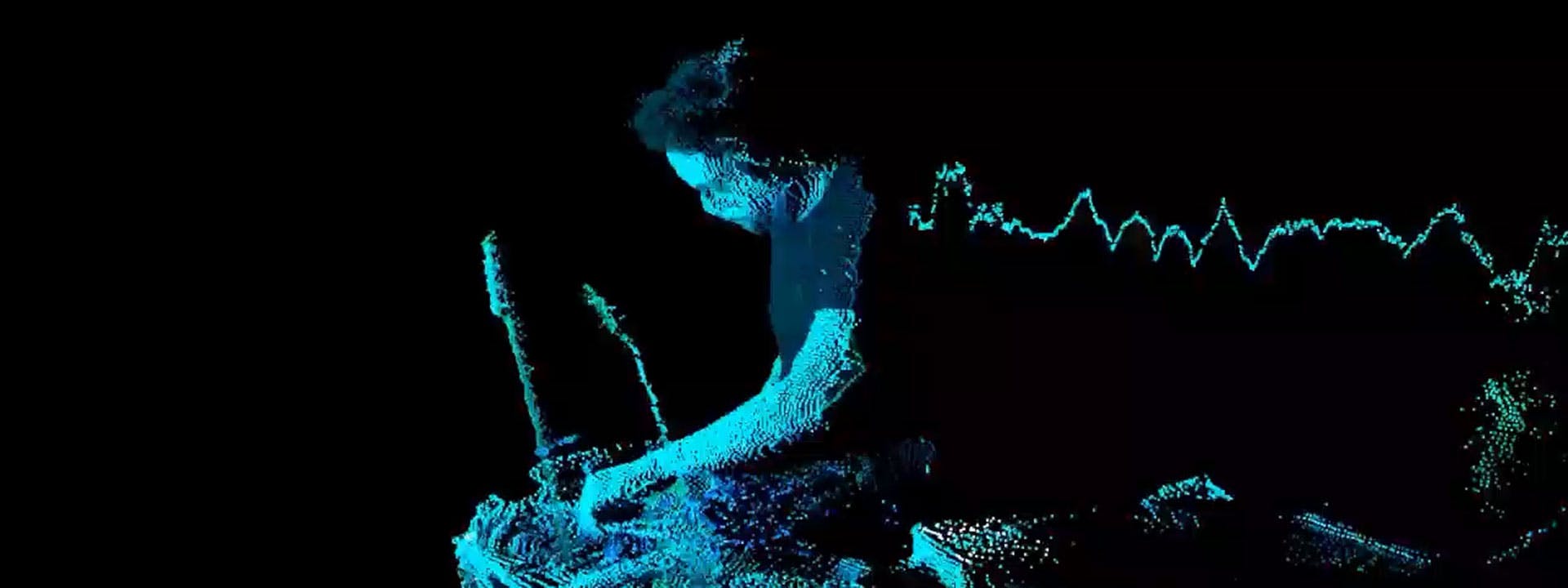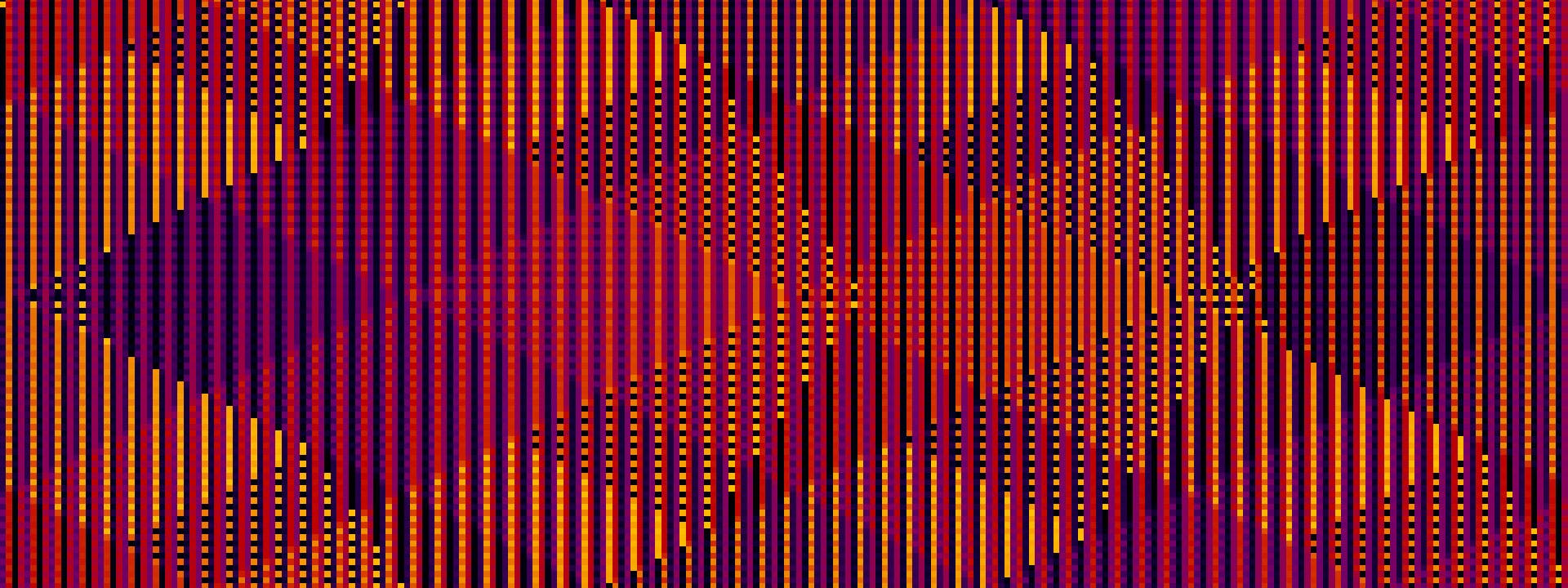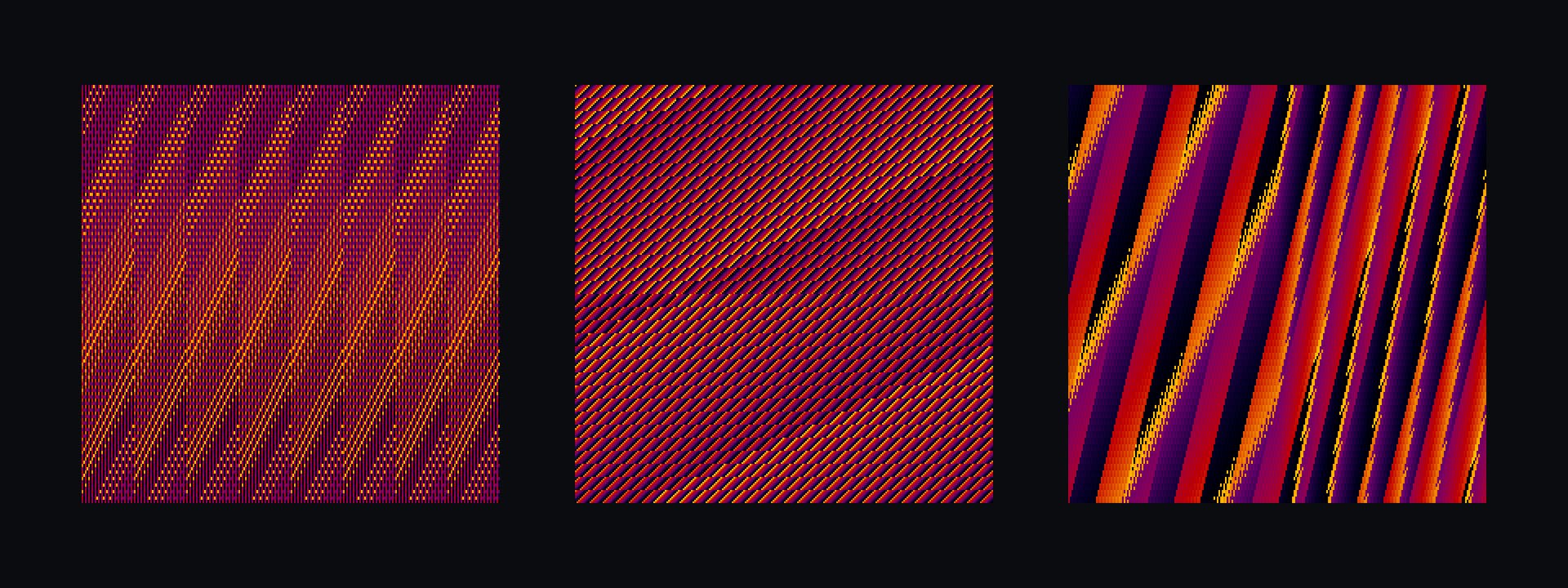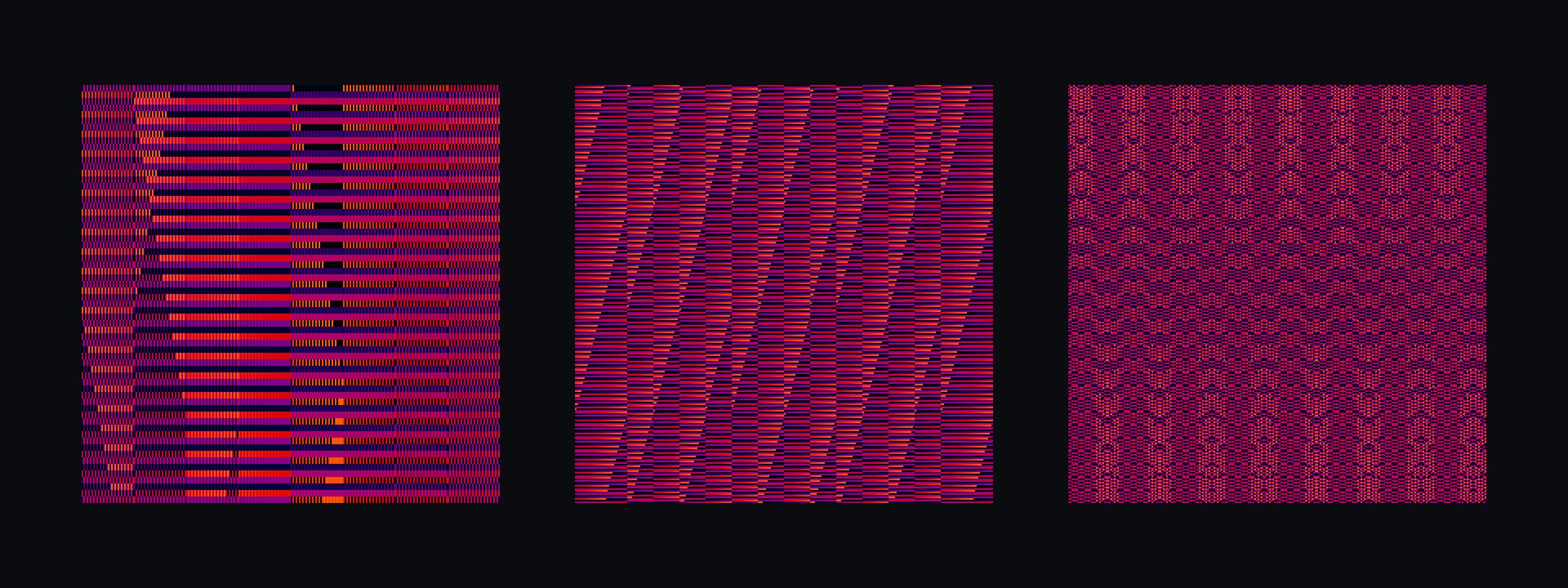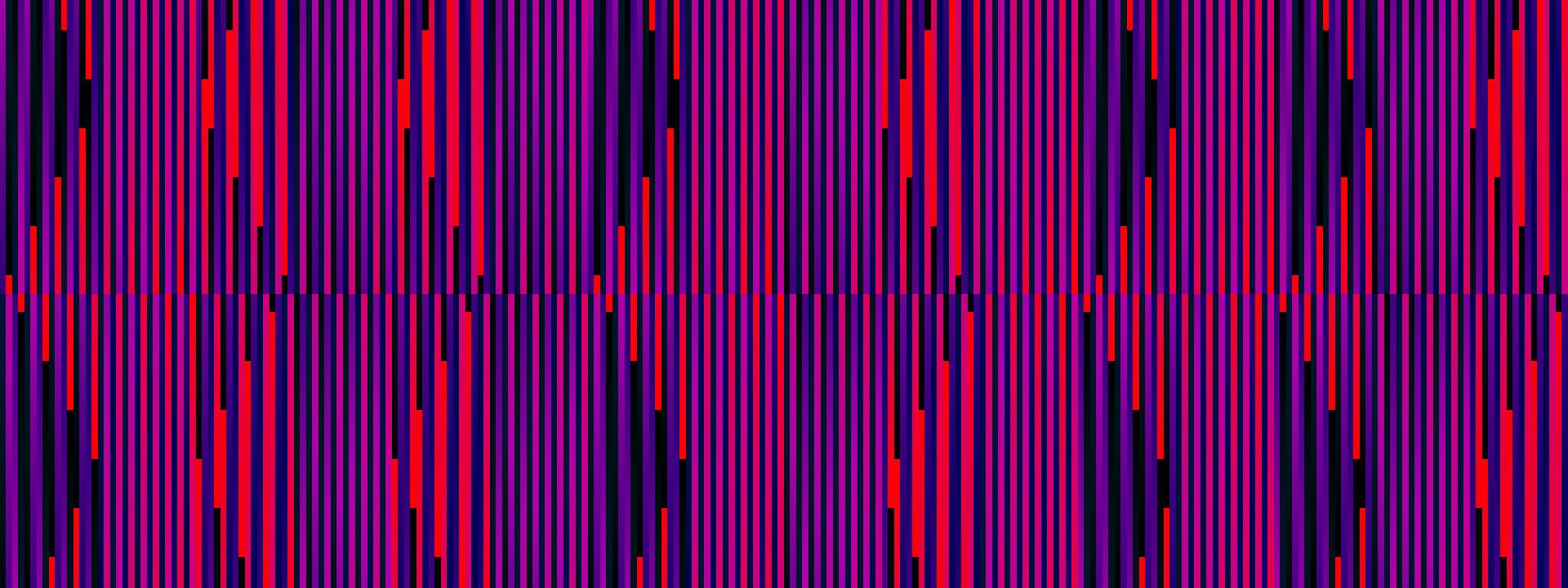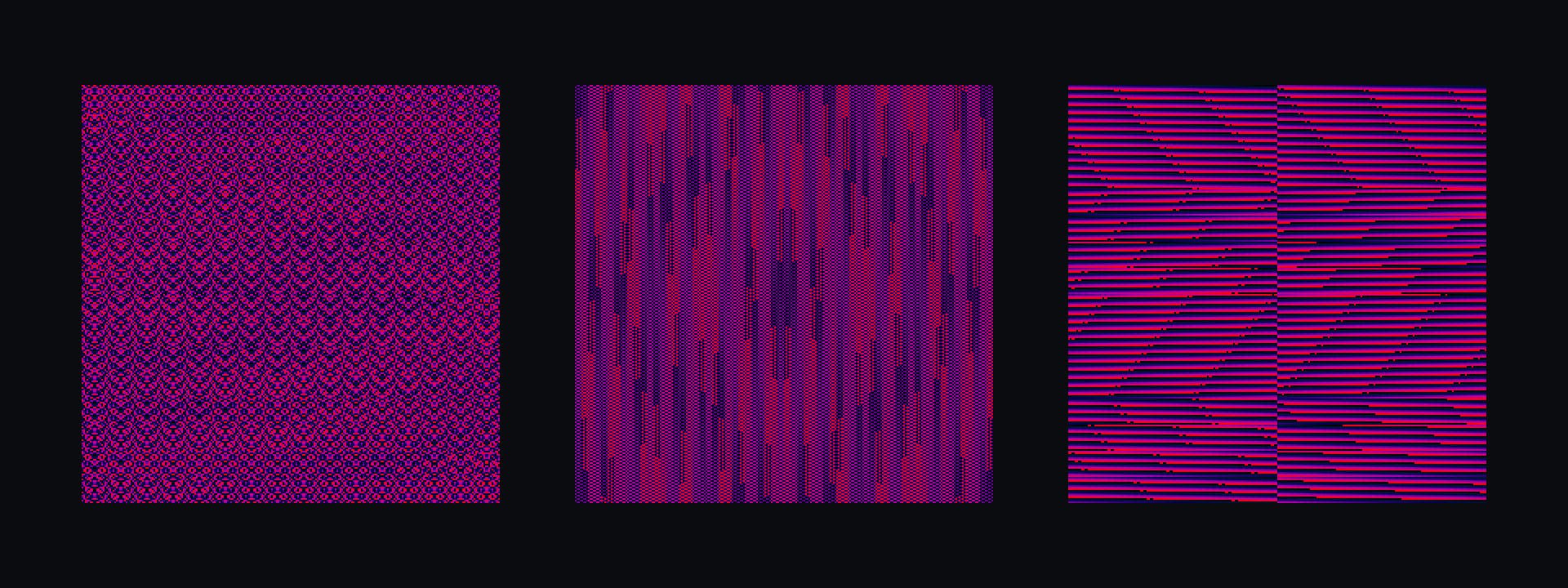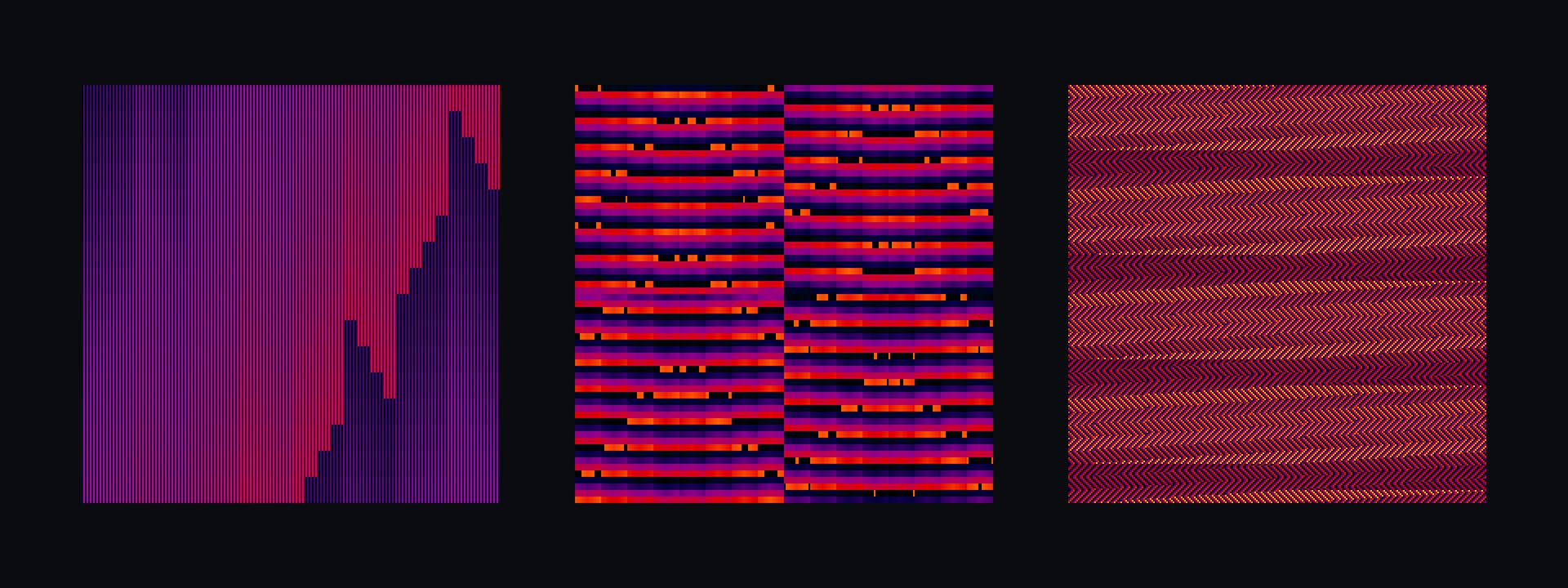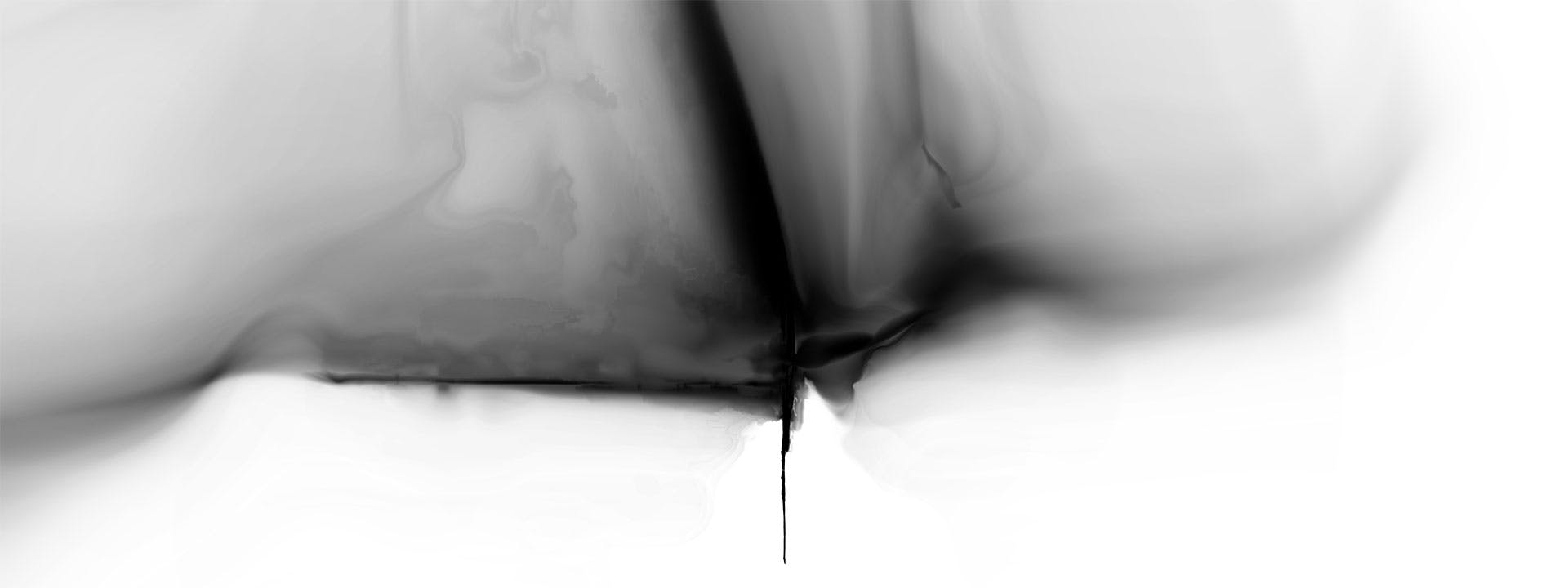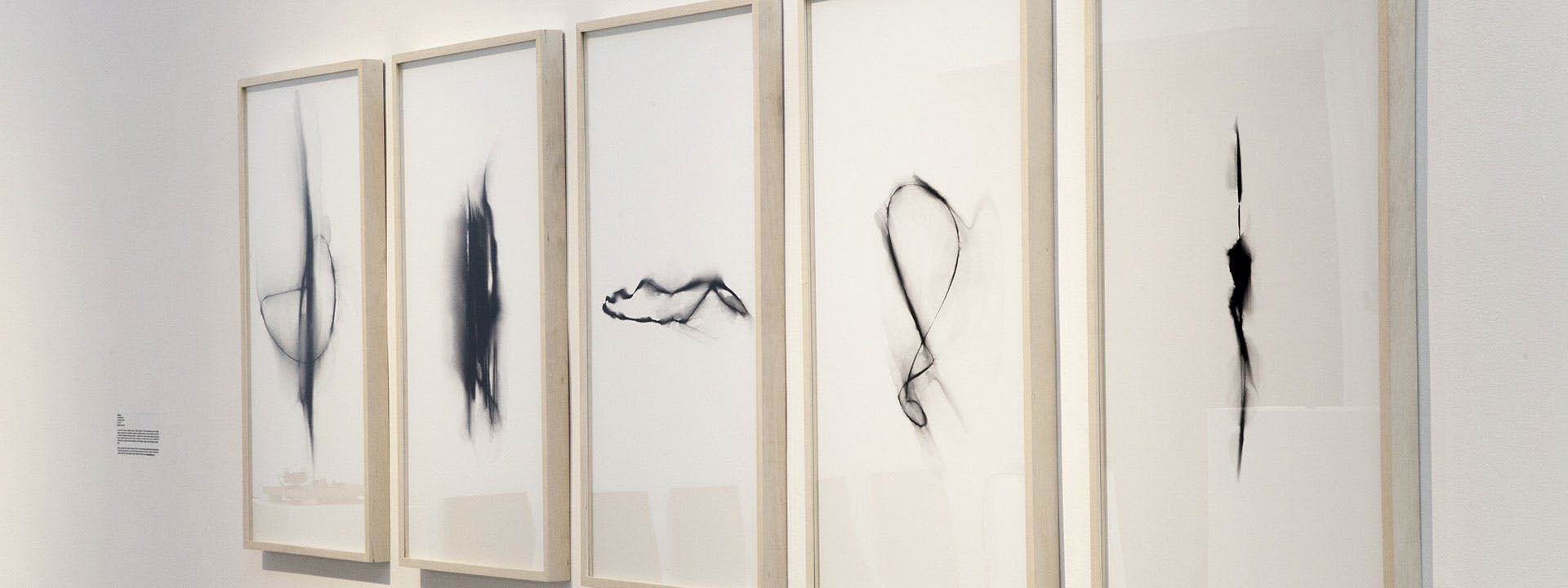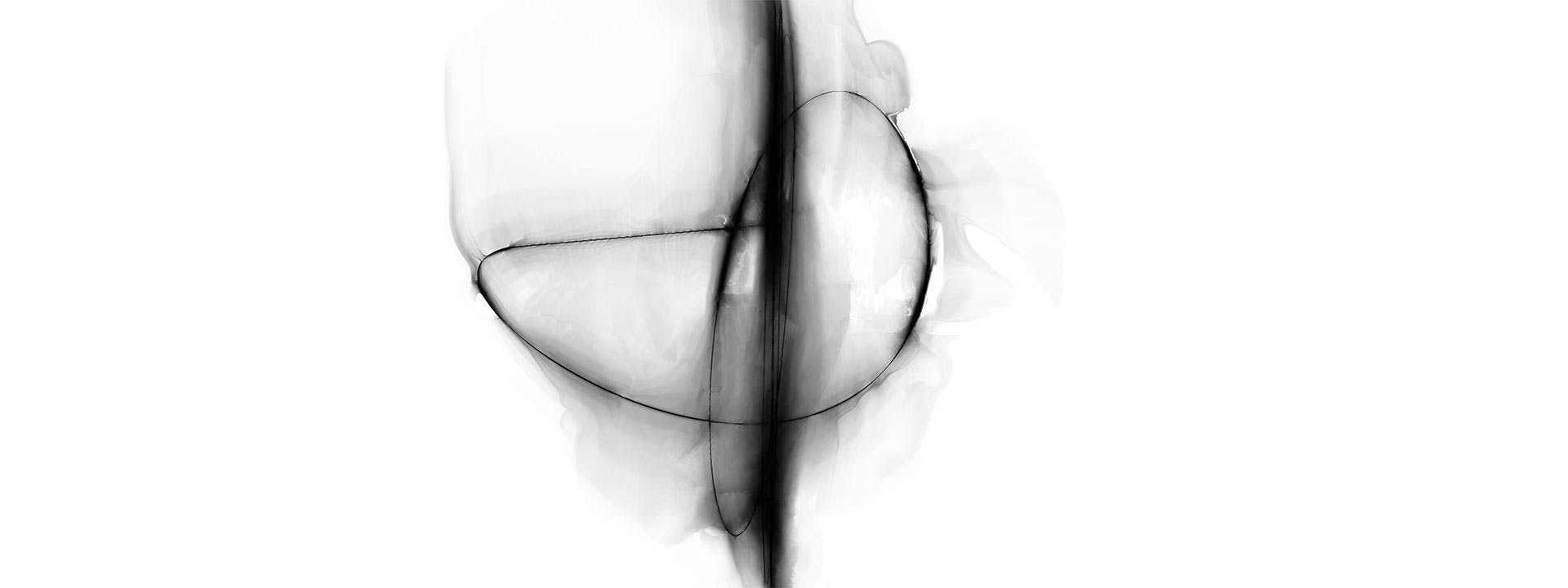Artist, Musician,
Multimedia Developer,
Creative Technologist
m@leston.studio
@matheusleston

Artistic Projects
Moiré is a very common optical effect in videos and photographs, emerging when two regular patterns, such as parallel lines, grids, or halftones overlap in slightly different positions. The phenomena was a reference for this performance, which utilizes as its main element two acoustic grand pianos controlled by a computer. The same pattern is played slightly dislocated in time by each piano, highlighting both their difference and common structure. And therefore transposing the moiré effect to sound.
I also control a modular synth on stage, creating a musical structure over which the pianos play. The lighting of the whole space is programmed to contrast the performance's different moments explicitly.
Moiré
The project was commissioned by curator Lucas Bambozzi for the 2019 edition of the festival On_Off - Live Image Experiences at Itaú Cultural.
Video teaser
Interview about the project
by Leston
Marcos Bacon, Hannah Carvalho Photos
Pedro Nóbrega, Kim Nunes Video
Moiré
Moiré is a very common optical effect in videos and photographs, emerging when two regular patterns, such as parallel lines, grids, or halftones overlap in slightly different positions. The phenomena was a reference for this performance, which utilizes as its main element two acoustic grand pianos controlled by a computer. The same pattern is played slightly dislocated in time by each piano, highlighting both their difference and common structure. And therefore transposing the moiré effect to sound.
I also control a modular synth on stage, creating a musical structure over which the pianos play. The lighting of the whole space is programmed to contrast the performance's different moments explicitly.
The project was commissioned by curator Lucas Bambozzi for the 2019 edition of the festival On_Off - Live Image Experiences at Itaú Cultural.
Video teaser
Interview about the project
by Leston
Marcos Bacon, Hannah Carvalho Photos
Pedro Nóbrega, Kim Nunes Video
The Orquestra Vermelha (Red Orchestra) is a band in which I play with shadows of other musicians who are not on stage. Four led screens exhibit the silhouettes of the other six members in real-life size, as if they were in fact present. Simultaneously, I control the videos live while playing with them, becoming a shadow against the light of a fifth screen.
The musicians were recorded and filmed improvising at a studio, building on a few simple structures and musical sketches. Each recording was then, successively, edited and presented to the new invited artist. Therefore the tracks were shaped through a complex relation between composition, improvisation and editing.
Orquestra Vermelha
The project was created in 2013 as part of Itaú Cultural's Rumos Program. Throughout the years, it was presented in many cultural spaces and festivals around Brazil. In 2019, the album was launched, available on all streaming platforms.
Spotify, Deezer, Tidal, Apple Music, YouTube
Instagram
About the project
by Leston
Gustavo Boni Electric & Acoustic Bass
Richard Fermino Brass
Paulo Braga Piano
Maurício Fernandes Electric Piano
Eddu Ferreira Vocals & Guitar
Sam Tiago Drums
Danila Bustamante Video
Felipe Hermini Photography
Luis Lopes Recording & Mixing
Gabriel Bueno Recording & Audio Engineering
Marcos Bacon, Danila Bustamante, Filipa Aurélio, Hannah Carvalho, Ivson, Ricardo Miyada Photos
Orquestra Vermelha
The Orquestra Vermelha (Red Orchestra) is a band in which I play with shadows of other musicians who are not on stage. Four led screens exhibit the silhouettes of the other six members in real-life size, as if they were in fact present. Simultaneously, I control the videos live while playing with them, becoming a shadow against the light of a fifth screen.
The musicians were recorded and filmed improvising at a studio, building on a few simple structures and musical sketches. Each recording was then, successively, edited and presented to the new invited artist. Therefore the tracks were shaped through a complex relation between composition, improvisation and editing.
The project was created in 2013 as part of Itaú Cultural's Rumos Program. Throughout the years, it was presented in many cultural spaces and festivals around Brazil. In 2019, the album was launched, available on all streaming platforms.
Spotify, Deezer, Tidal, Apple Music, YouTube
Instagram
About the project
by Leston
Gustavo Boni Electric & Acoustic Bass
Richard Fermino Brass
Paulo Braga Piano
Maurício Fernandes Electric Piano
Eddu Ferreira Vocals & Guitar
Sam Tiago Drums
Danila Bustamante Video
Felipe Hermini Photography
Luis Lopes Recording & Mixing
Gabriel Bueno Recording & Audio Engineering
Marcos Bacon, Danila Bustamante, Filipa Aurélio, Hannah Carvalho, Ivson, Ricardo Miyada Photos
Pedra Pássaro (Stone Bird) is a generative series. That means its images are generated through algorithms and not modeled manually: code controls all aspects of every 3D. Both its geometry and materiality suggest that it can be a mineral (rock, stone) and an animal (bird, flesh) at the same time. Although the rendered images are of a very complex, highly-detailed quality, this convergence (or perhaps collision) between the realms generates implausible scenes, resurfacing as clearly digital: these organic creature-objects are in fact built through a visibly inorganic creation process.
Because it is a generative process, Pedra Pássaro is also an infinite series. Observing the different outputs of the project, both the peculiarities of each image and the correspondences induced by their governing system become perceivable.
Pedra Pássaro
The series has been launched and is being commercialized since 2021 as unique prints (1/1) and NFTs.
Objkt.com, Teia, Foundation
by Leston
Ateliê Dois E Meio Printing
Pedra Pássaro
Pedra Pássaro (Stone Bird) is a generative series. That means its images are generated through algorithms and not modeled manually: code controls all aspects of every 3D. Both its geometry and materiality suggest that it can be a mineral (rock, stone) and an animal (bird, flesh) at the same time. Although the rendered images are of a very complex, highly-detailed quality, this convergence (or perhaps collision) between the realms generates implausible scenes, resurfacing as clearly digital: these organic creature-objects are in fact built through a visibly inorganic creation process.
Because it is a generative process, Pedra Pássaro is also an infinite series. Observing the different outputs of the project, both the peculiarities of each image and the correspondences induced by their governing system become perceivable.
The series has been launched and is being commercialized since 2021 as unique prints (1/1) and NFTs.
Objkt.com, Teia, Foundation
by Leston
Ateliê Dois E Meio Printing
Mountains, ridges, summits: an accumulation of tectonic faults over time.
An algorithm to reproduce the faults: a code that generates infinite and ever-changing landscapes by using noise, fractals, and calculated imperfections.
A material to reproduce the time: a photoluminescent surface retains light, little by little accumulating layers, little by little erasing its history.
Horizonte Falésia
This installation was presented at a party by Beck's + Timewarp in May 2022.
by Leston
Paulinho Fluxuz & Gustavo Milward Lasers
Kim Costa Nunes Photos & Video
Horizonte Falésia
Mountains, ridges, summits: an accumulation of tectonic faults over time.
An algorithm to reproduce the faults: a code that generates infinite and ever-changing landscapes by using noise, fractals, and calculated imperfections.
A material to reproduce the time: a photoluminescent surface retains light, little by little accumulating layers, little by little erasing its history.
This installation was presented at a party by Beck's + Timewarp in May 2022.
by Leston
Paulinho Fluxuz & Gustavo Milward Lasers
Kim Costa Nunes Photos & Video
One of my biggest interests in Electronic Music is the way that in certain productions, usually techno-oriented, the harmonic discussion seems secondary. Timbres, textures, sound design, rhythms and effects are highlighted, hence leaving our perception of note, chord and harmony choices in the background. Maybe even making them less important.
Alongside the many years I've been working, I've developed a series of techniques which allow me to explore these aspects very deeply. Today, my main rig is a modular synth, controlled through code, which I keep working on and improving at all times. With it, I have the possibility of doing completely improvised live performances, in which I don't use pre-programmed tracks or track parts. Everything is generated randomly and in real-time through code. Playing live becomes a dialogue: I respond to what the computer creates while controlling it myself.
Live
I have used this system for raves such as Masterplano, Carlos Capslock's Çala Çatélite and Mamba Negra's Rádio Vírus. Besides, I've also done a series of 3D live presentations from my studio during the pandemic.
Obra
Música no Deck
Trajetórias
by Leston
Live
One of my biggest interests in Electronic Music is the way that in certain productions, usually techno-oriented, the harmonic discussion seems secondary. Timbres, textures, sound design, rhythms and effects are highlighted, hence leaving our perception of note, chord and harmony choices in the background. Maybe even making them less important.
Alongside the many years I've been working, I've developed a series of techniques which allow me to explore these aspects very deeply. Today, my main rig is a modular synth, controlled through code, which I keep working on and improving at all times. With it, I have the possibility of doing completely improvised live performances, in which I don't use pre-programmed tracks or track parts. Everything is generated randomly and in real-time through code. Playing live becomes a dialogue: I respond to what the computer creates while controlling it myself.
I have used this system for raves such as Masterplano, Carlos Capslock's Çala Çatélite and Mamba Negra's Rádio Vírus. Besides, I've also done a series of 3D live presentations from my studio during the pandemic.
Obra
Música no Deck
Trajetórias
by Leston
The title of the series 256x256x256x256 refers to its limitations, its rules: each GIF has a resolution of 256x256 pixels, 256 frames and 256 colors. Correspondingly, each frame has 256 pixels in each of its 256 colors. Through time, each of the pixels fade from one color to another.
At first glance, this set of rules might seem arbitrary. However, they are the core of the project: all of the GIFs are one and the same in terms of matter, built by the same pixels, changing their color the exact same way. What in fact differs from one animated image to the next is only their positioning - solely responsible for transforming our entire perception of movement and color.
256 x 256 x 256 x 256
The series is being developed since the end of 2021 and launched as NFT through the Tezos network.
Objkt.com, Teia
by Leston
256 x 256 x 256 x 256
The title of the series 256x256x256x256 refers to its limitations, its rules: each GIF has a resolution of 256x256 pixels, 256 frames and 256 colors. Correspondingly, each frame has 256 pixels in each of its 256 colors. Through time, each of the pixels fade from one color to another.
At first glance, this set of rules might seem arbitrary. However, they are the core of the project: all of the GIFs are one and the same in terms of matter, built by the same pixels, changing their color the exact same way. What in fact differs from one animated image to the next is only their positioning - solely responsible for transforming our entire perception of movement and color.
The works from the Mono series look like handmade paintings: the gesture and texture of the paint are apparent. But, when closely inspected, it is noticeable that they are digital prints. Those images don't have any handmade aspects and are entirely created with algorithms.
Two simple pictures of black lines on a white background are randomly generated. They are interpreted as one unique, very short video with only two frames. The computer calculates the movement that should have happened between those two shapes, even if they are unrelated. This procedure is repeated a few times with the results of the previous iterations so that this error (trying to calculate something that doesn't exist) gets accumulated.
In this process, the tools are used in unexpected ways. Besides, and most importantly, the organic aspect of the gestures depicted in those pieces comes from the accumulation of mistakes and the superposition of calculation errors.
Mono
The series started in 2016 when it was shown in the exhibition Periscópio at Zipper Gallery, curated by Fernando Velázquez. It has been developed until this day.
by Leston
Ana Beatriz Elorza Photos
Mono
The works from the Mono series look like handmade paintings: the gesture and texture of the paint are apparent. But, when closely inspected, it is noticeable that they are digital prints. Those images don't have any handmade aspects and are entirely created with algorithms.
Two simple pictures of black lines on a white background are randomly generated. They are interpreted as one unique, very short video with only two frames. The computer calculates the movement that should have happened between those two shapes, even if they are unrelated. This procedure is repeated a few times with the results of the previous iterations so that this error (trying to calculate something that doesn't exist) gets accumulated.
In this process, the tools are used in unexpected ways. Besides, and most importantly, the organic aspect of the gestures depicted in those pieces comes from the accumulation of mistakes and the superposition of calculation errors.
The series started in 2016 when it was shown in the exhibition Periscópio at Zipper Gallery, curated by Fernando Velázquez. It has been developed until this day.
by Leston
Ana Beatriz Elorza Photos
